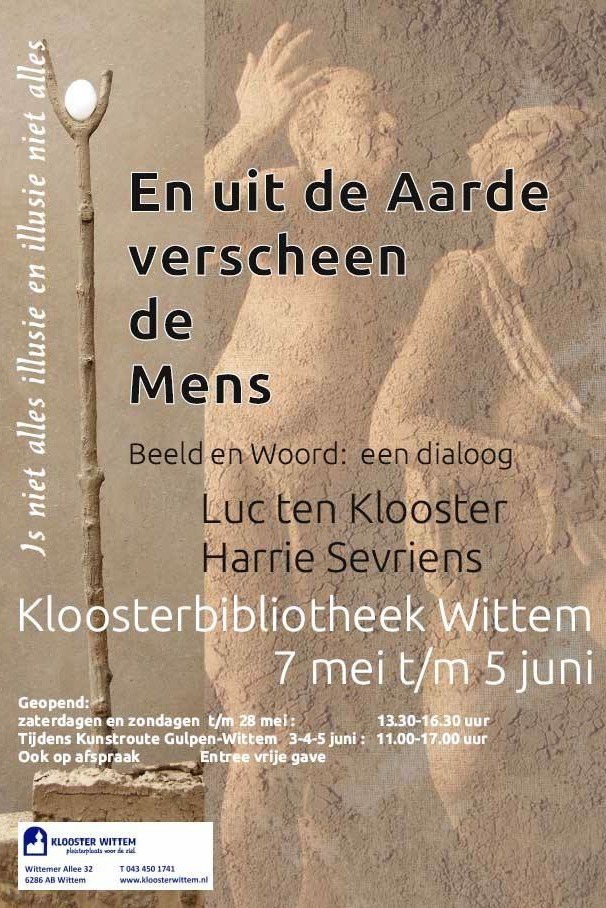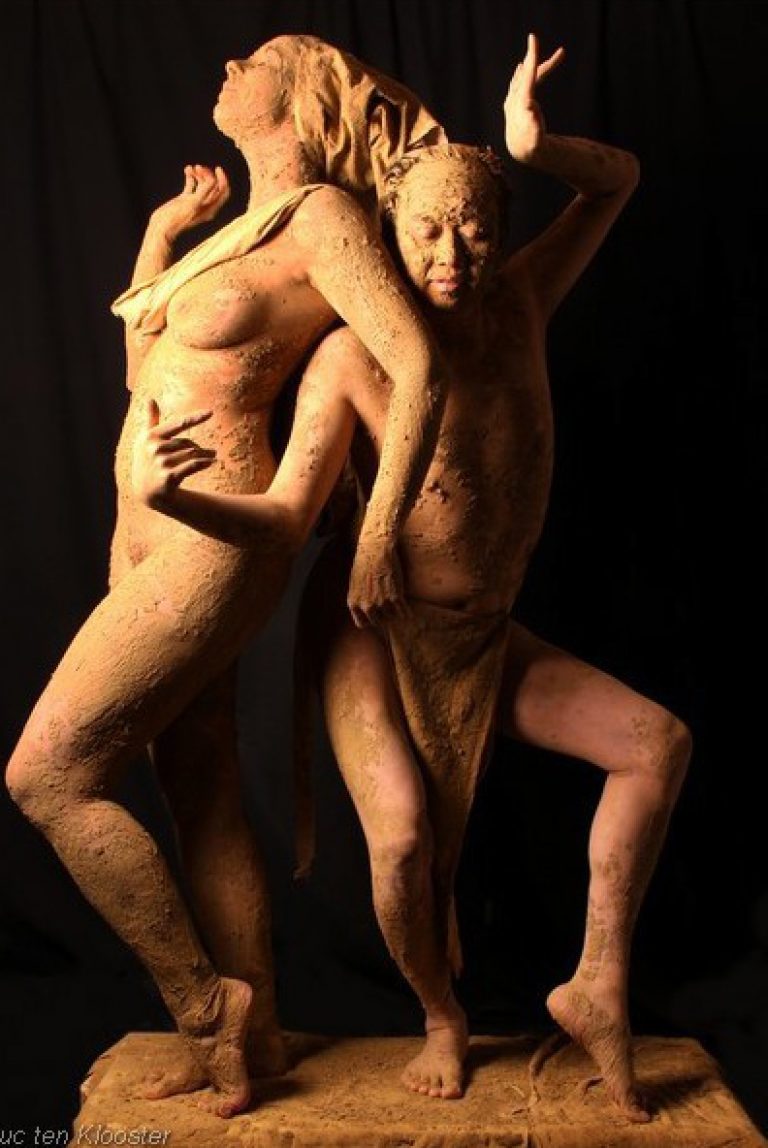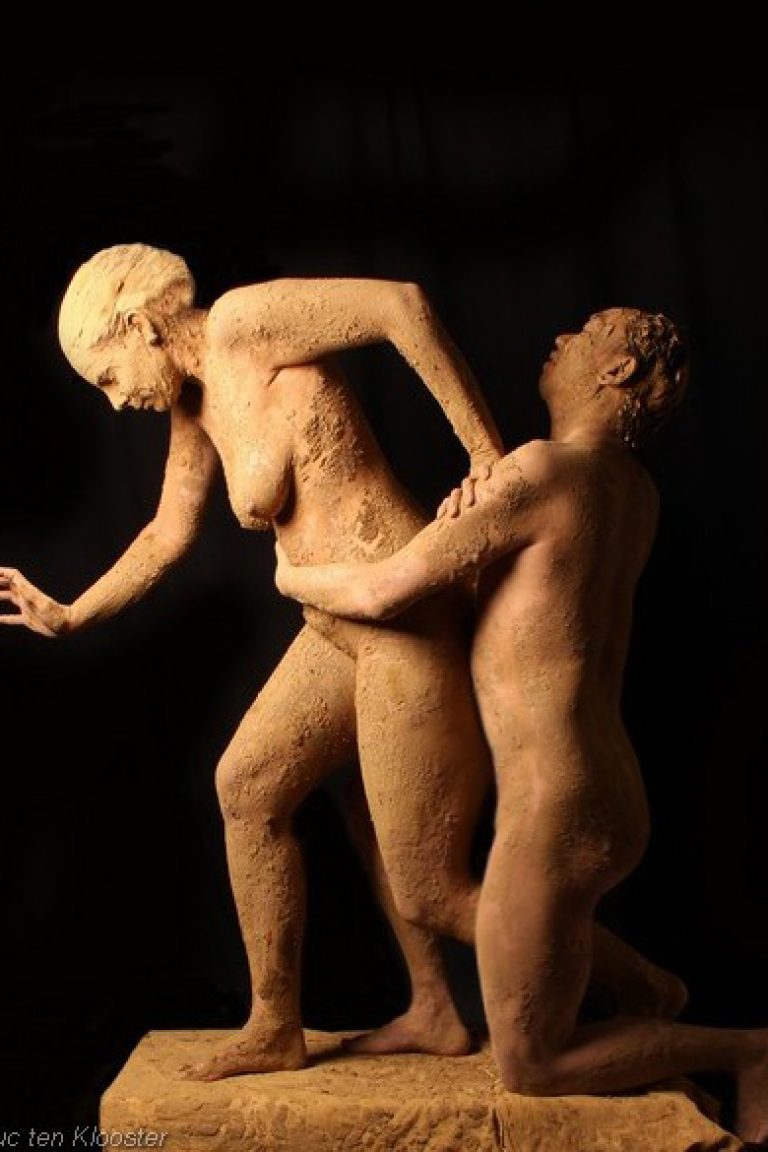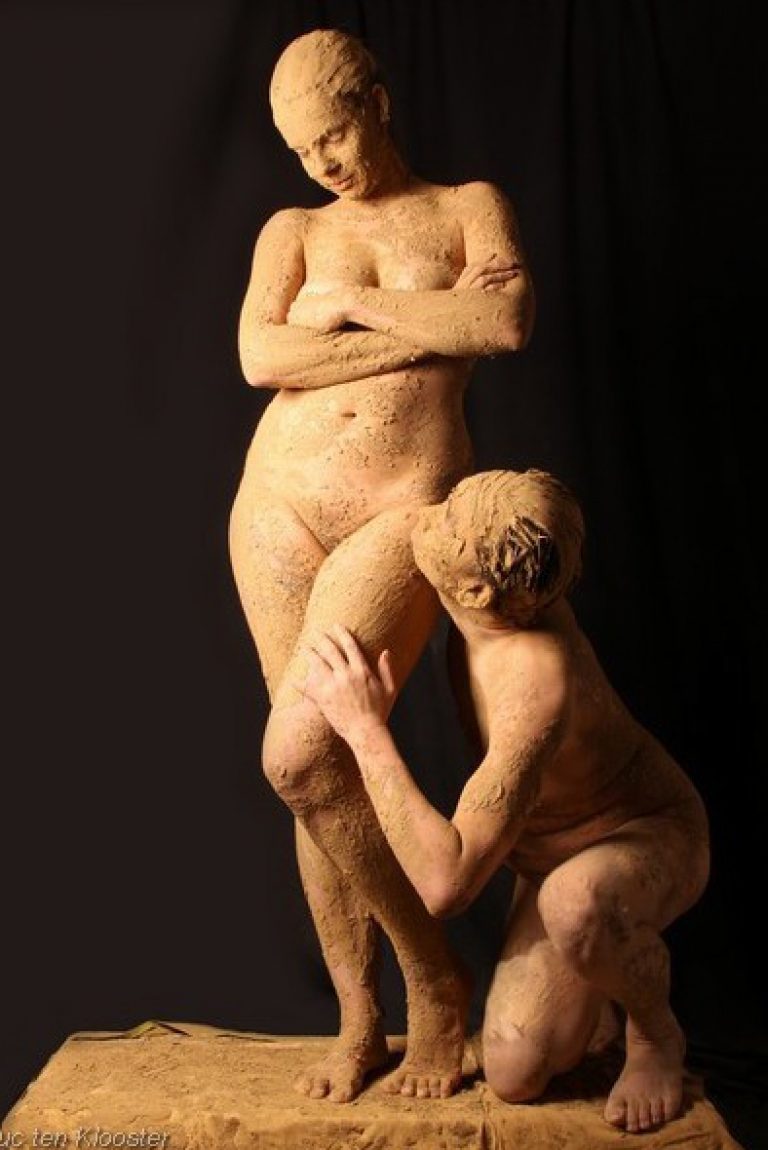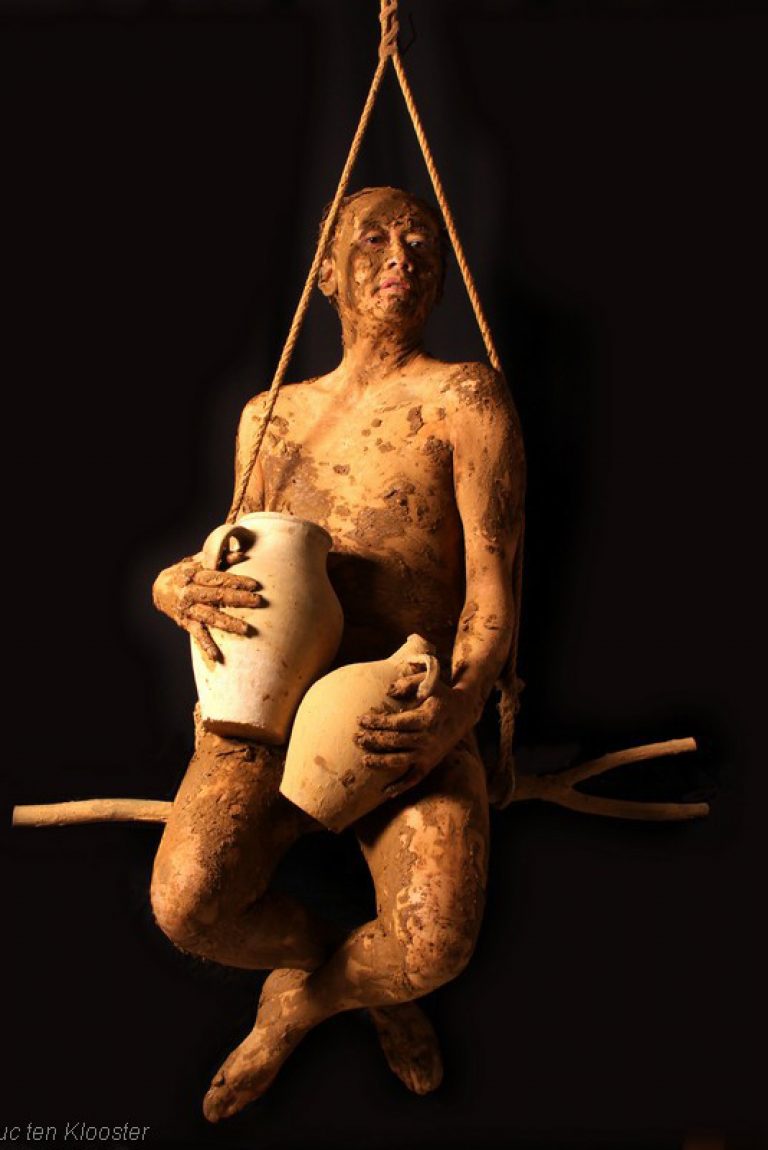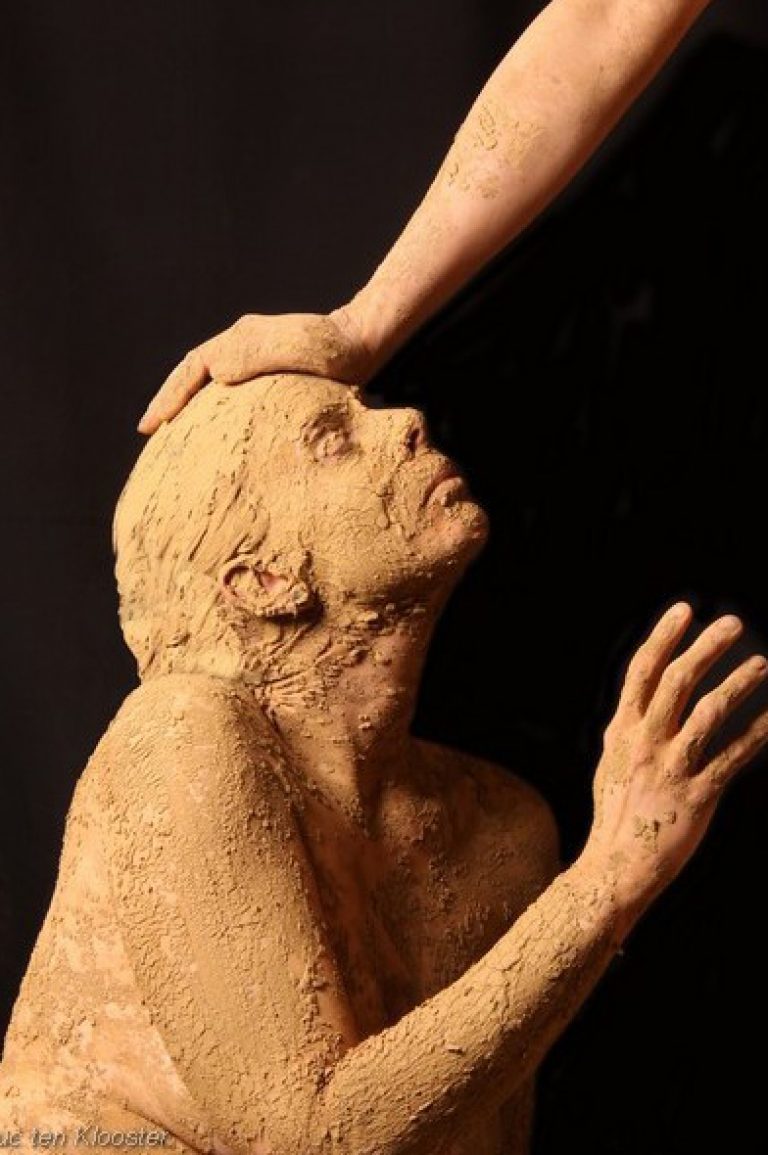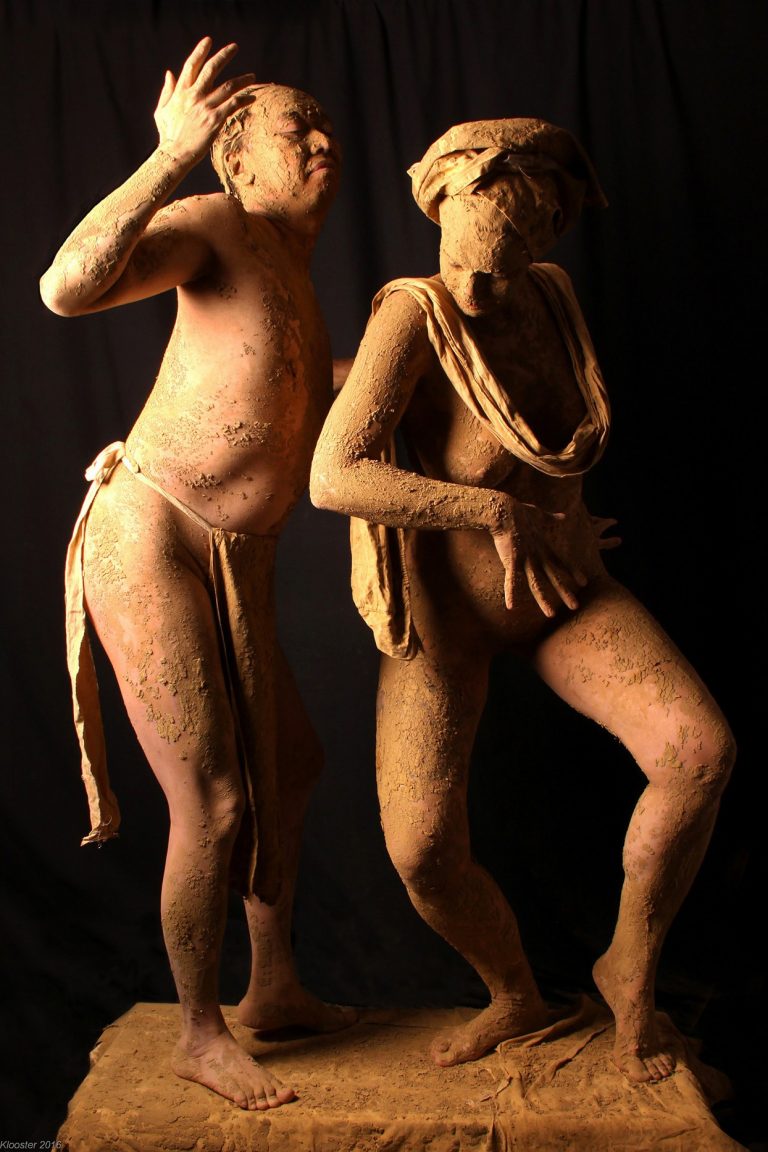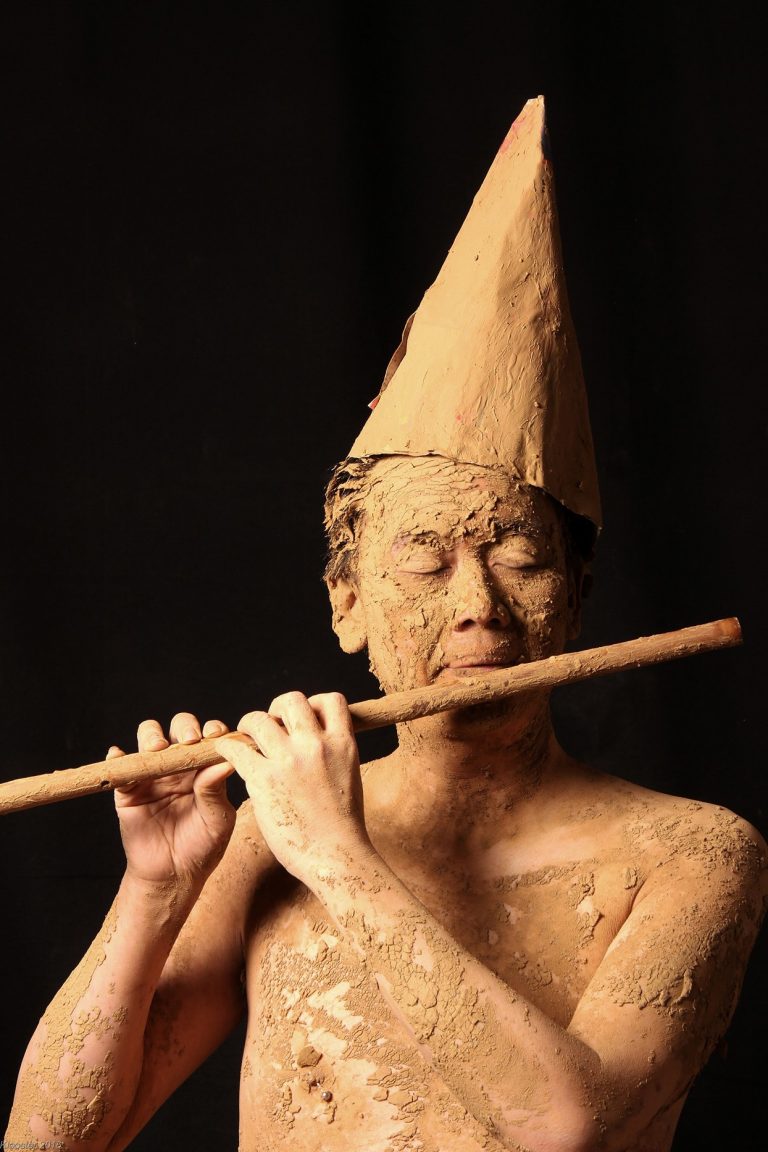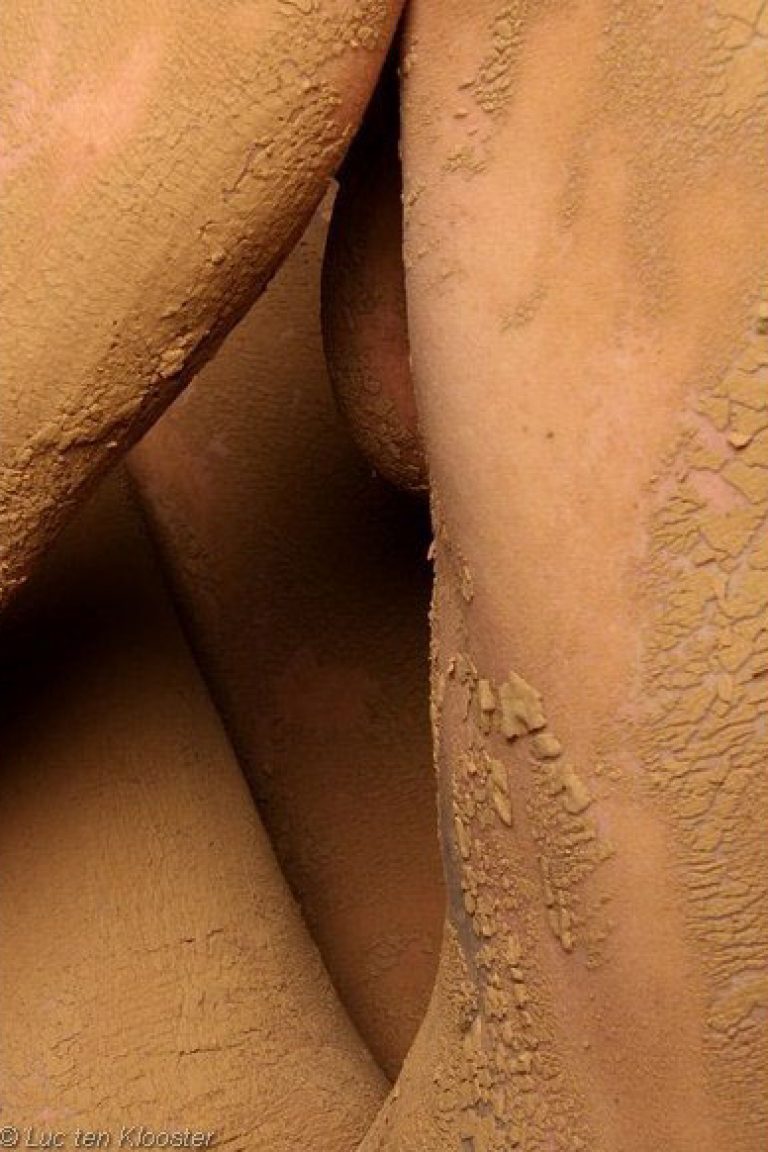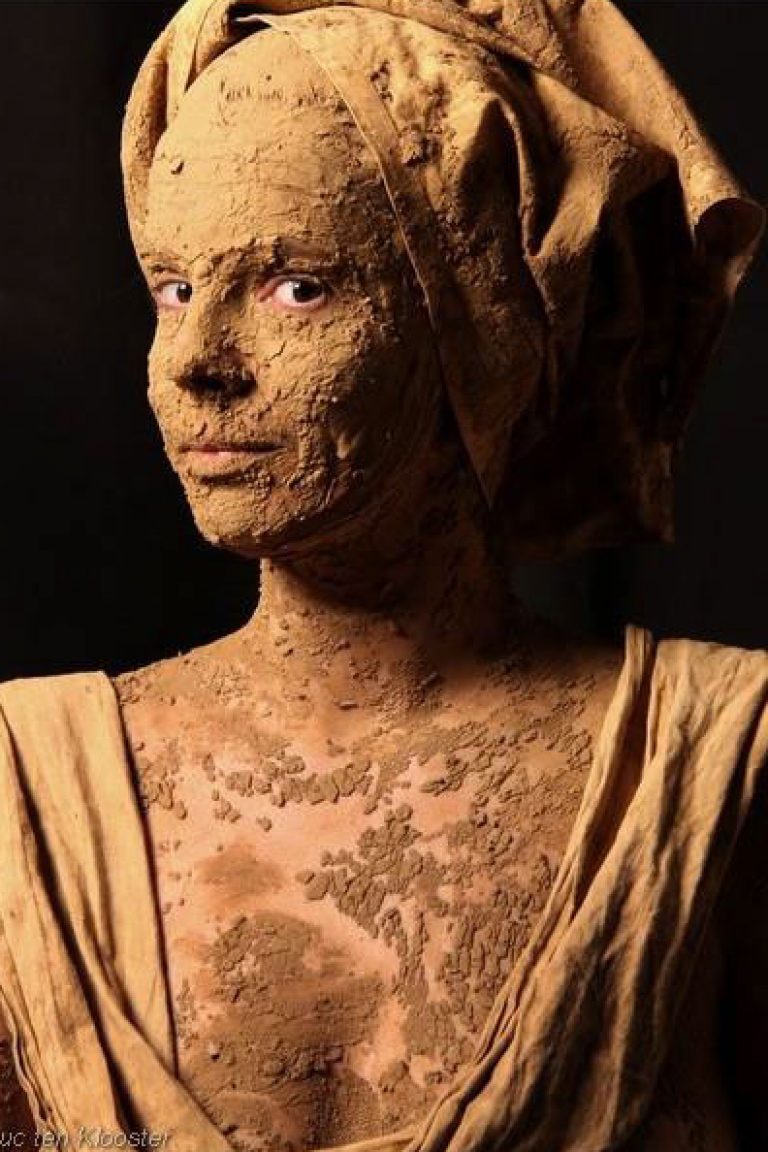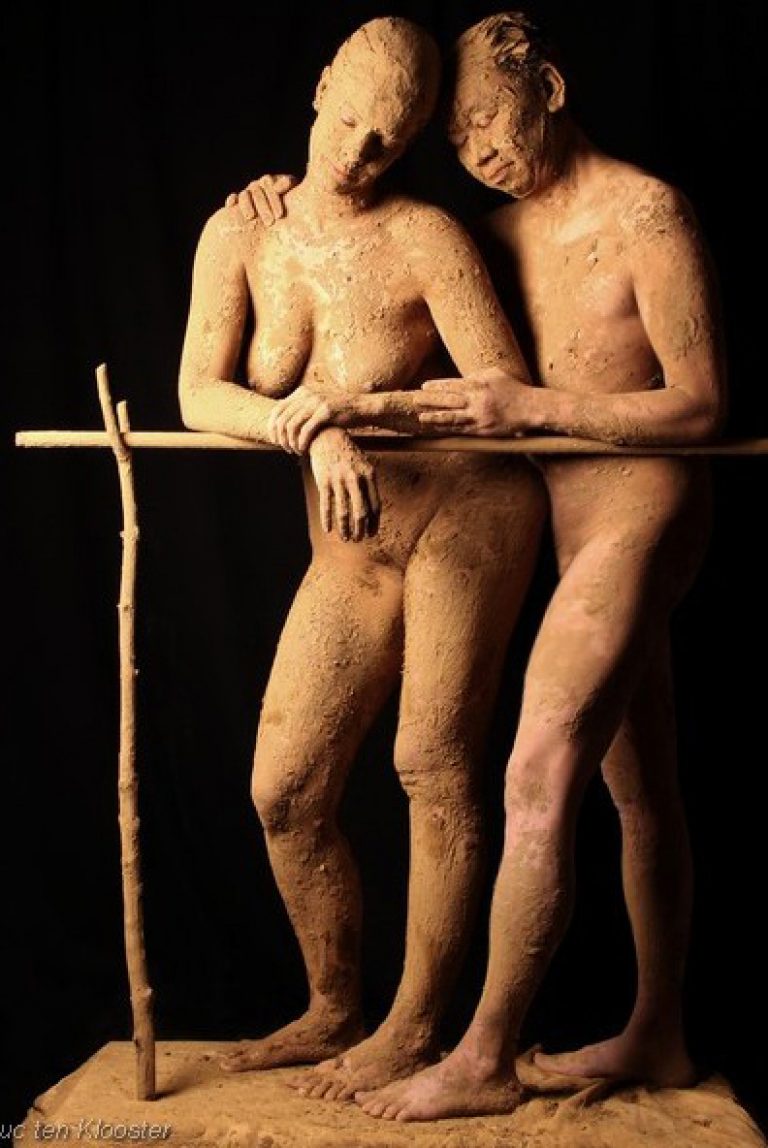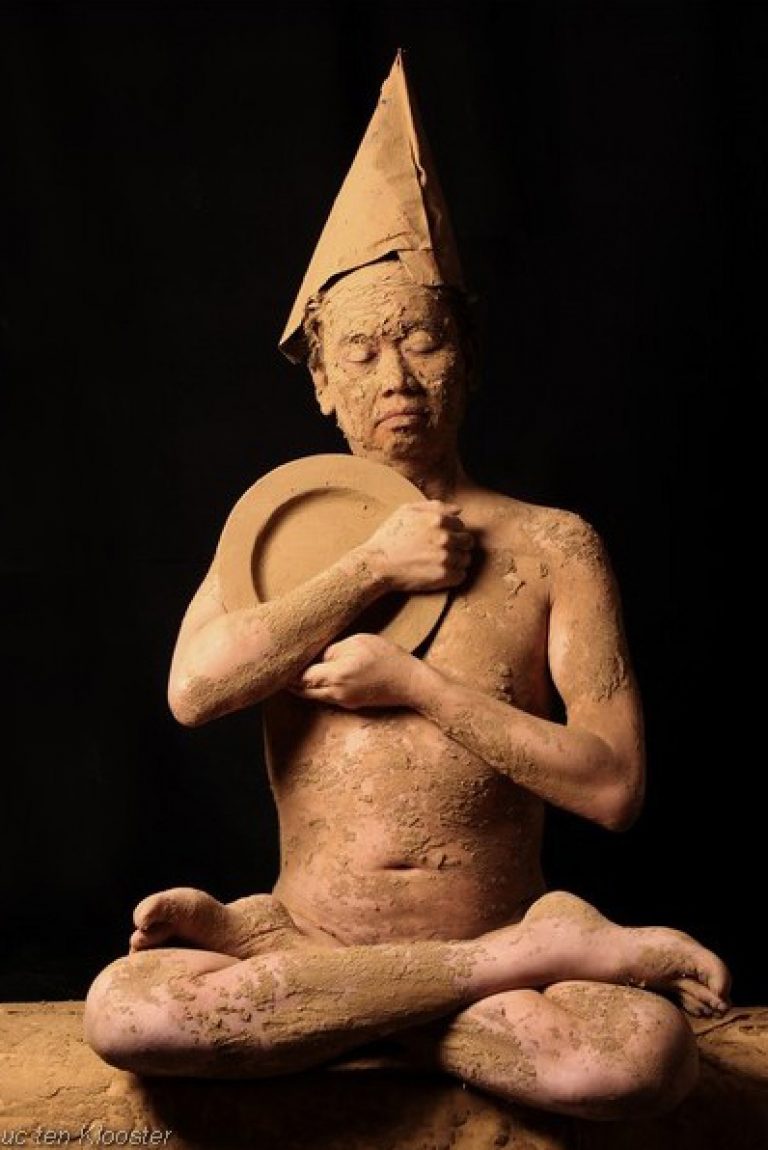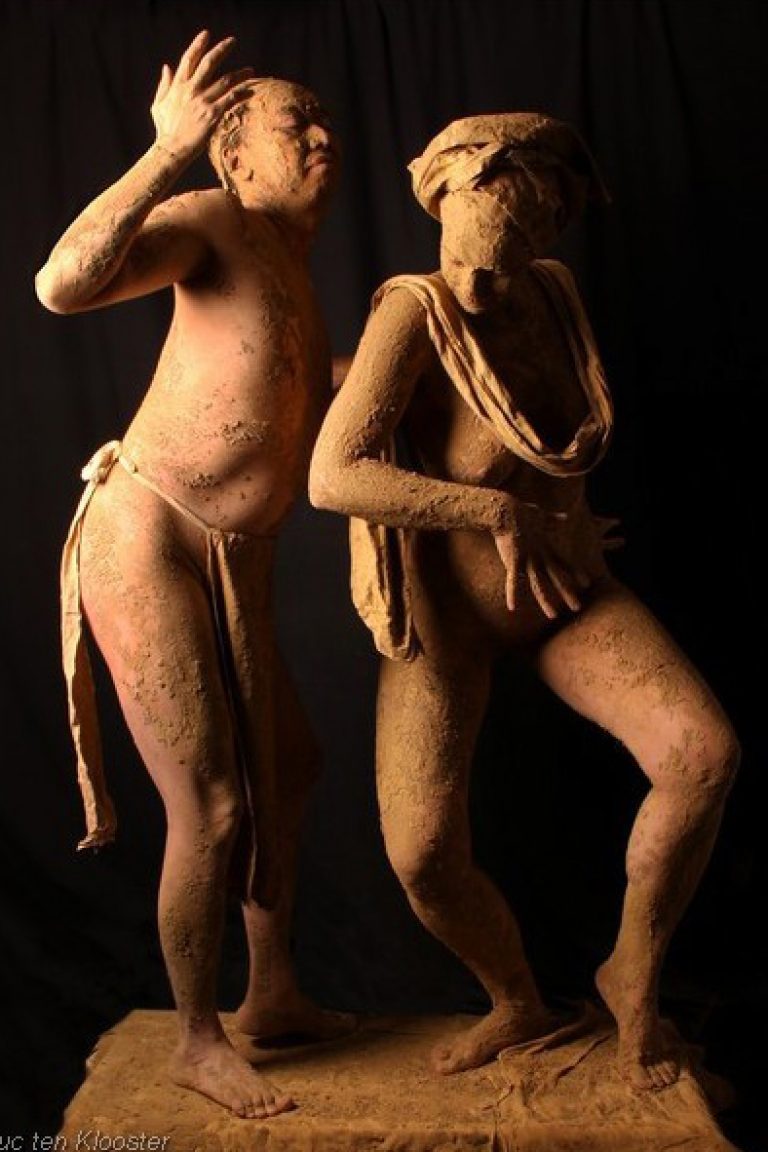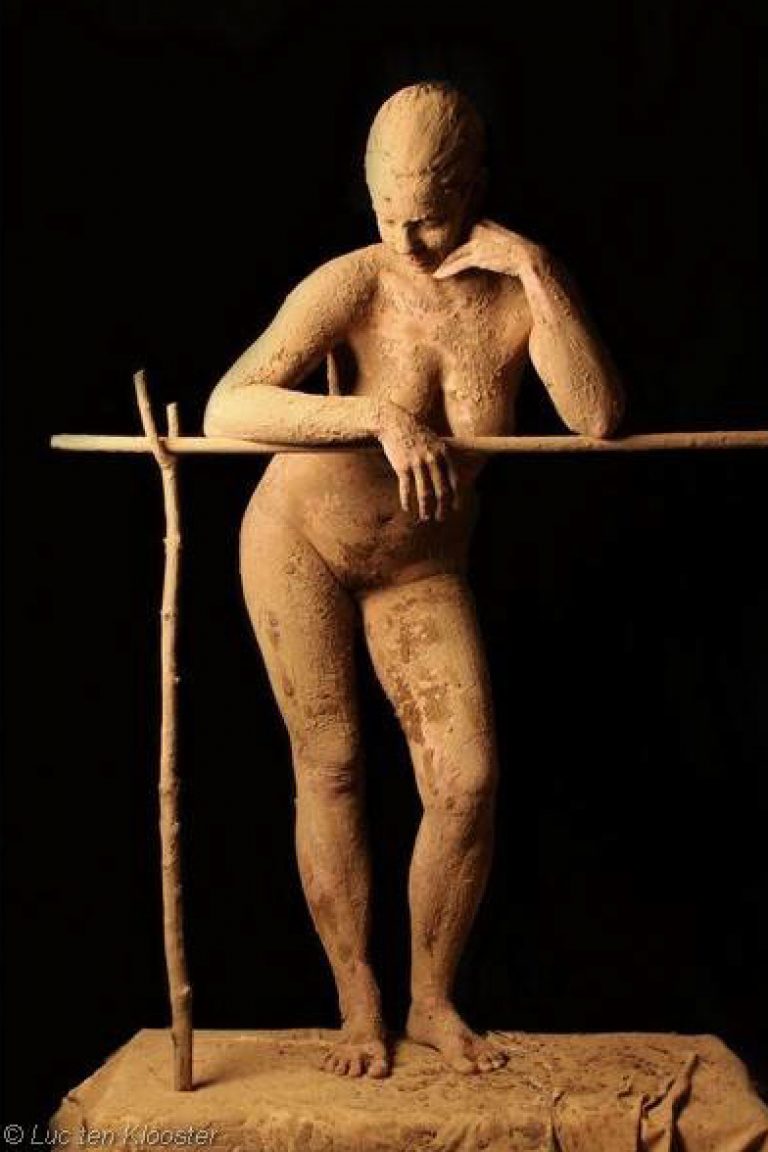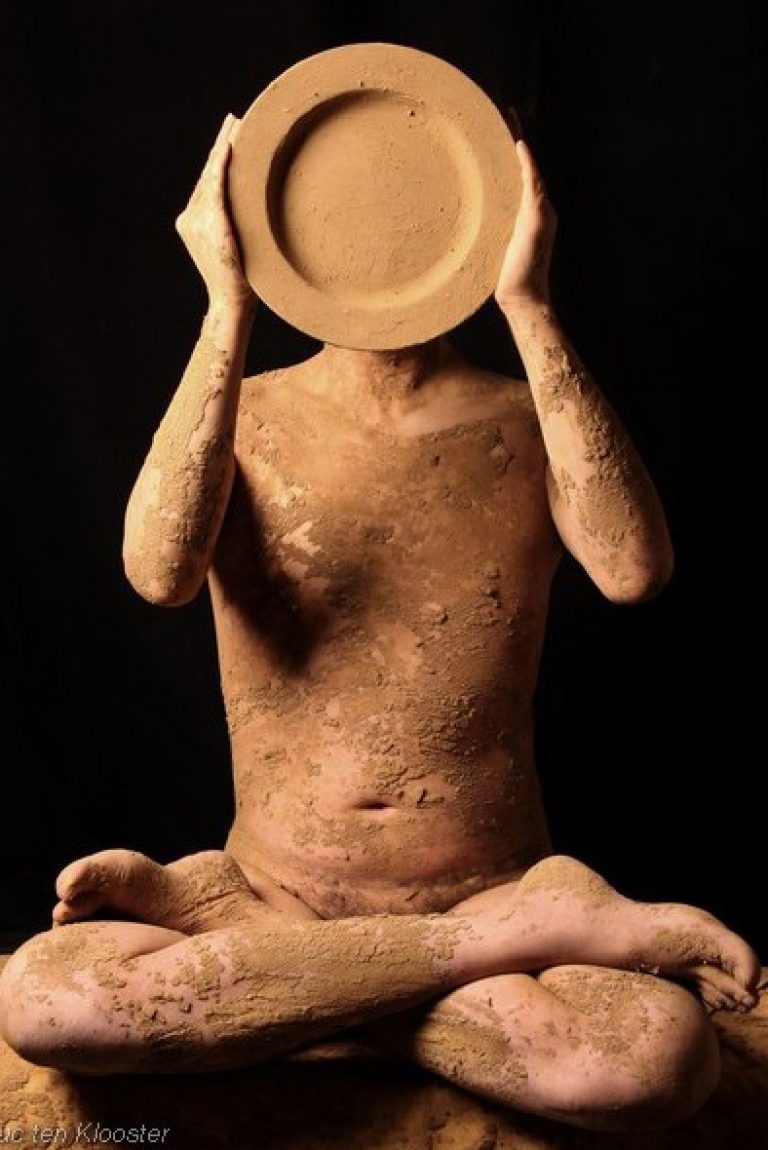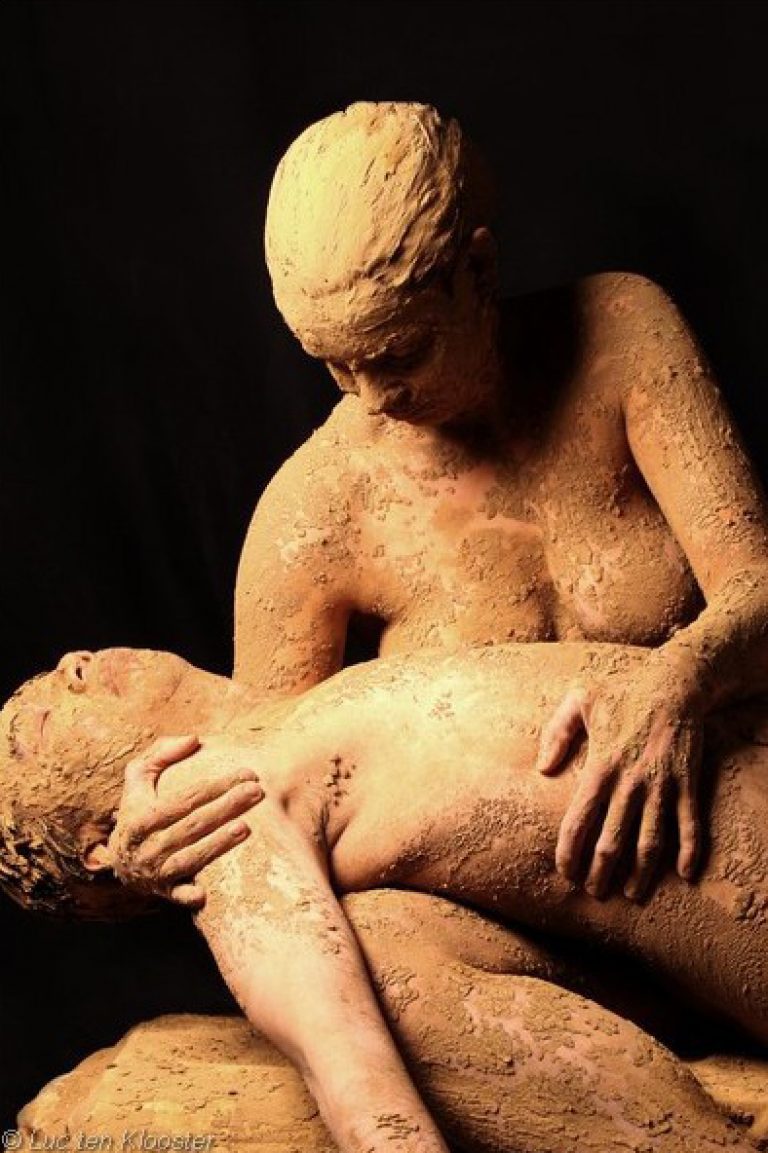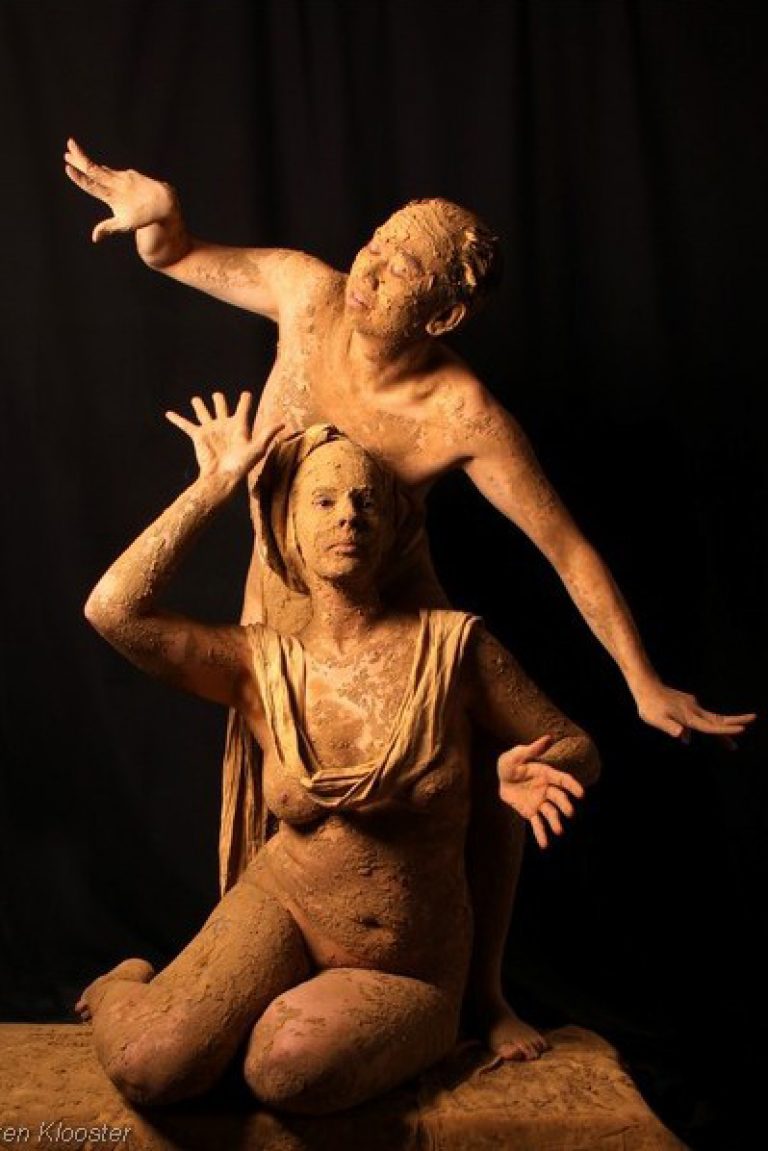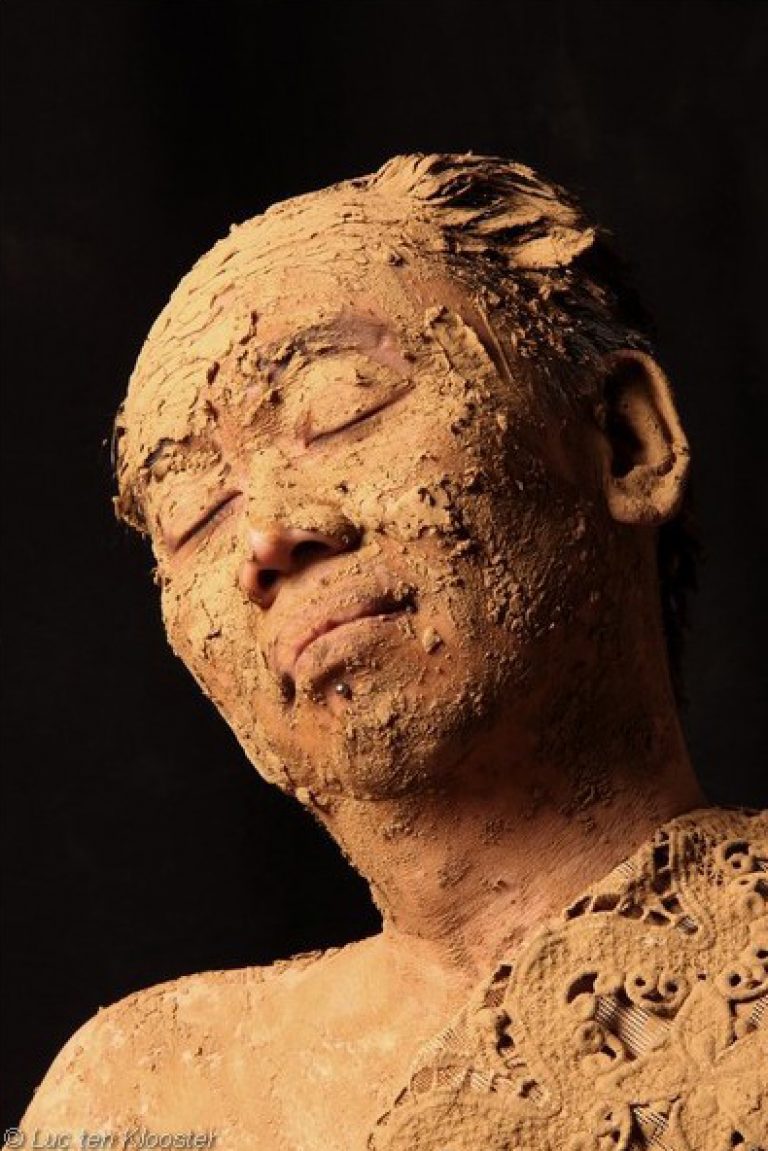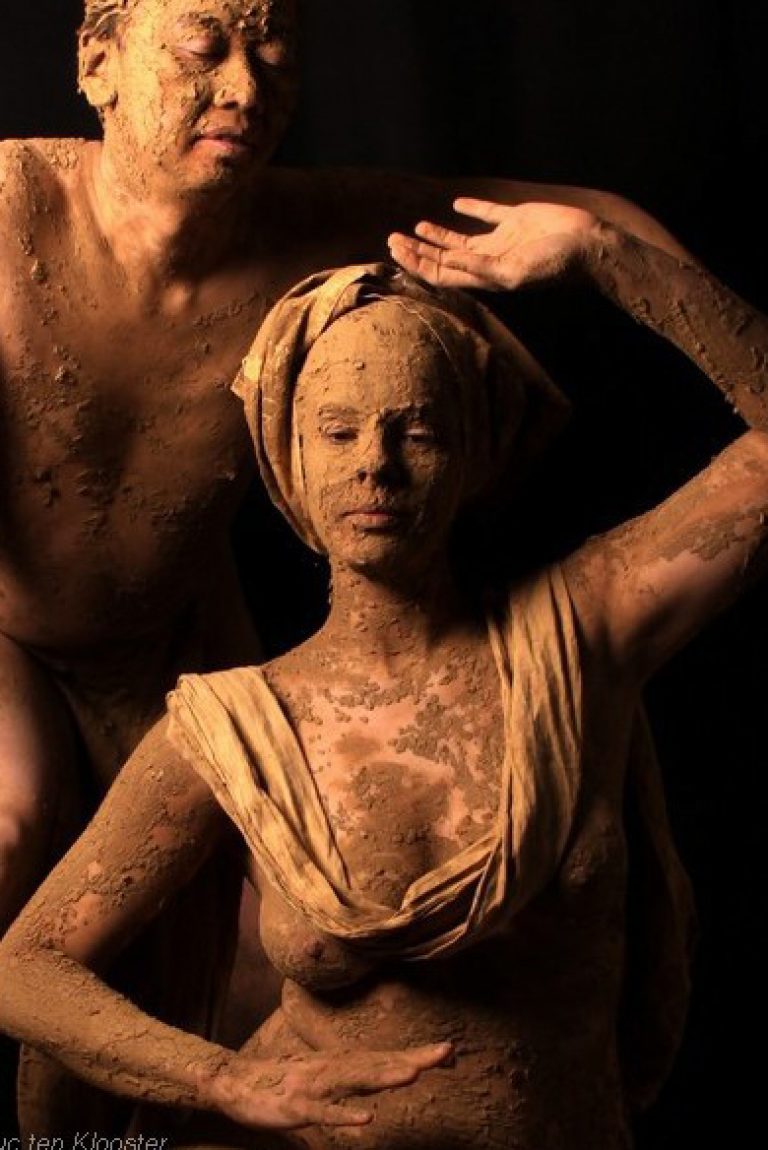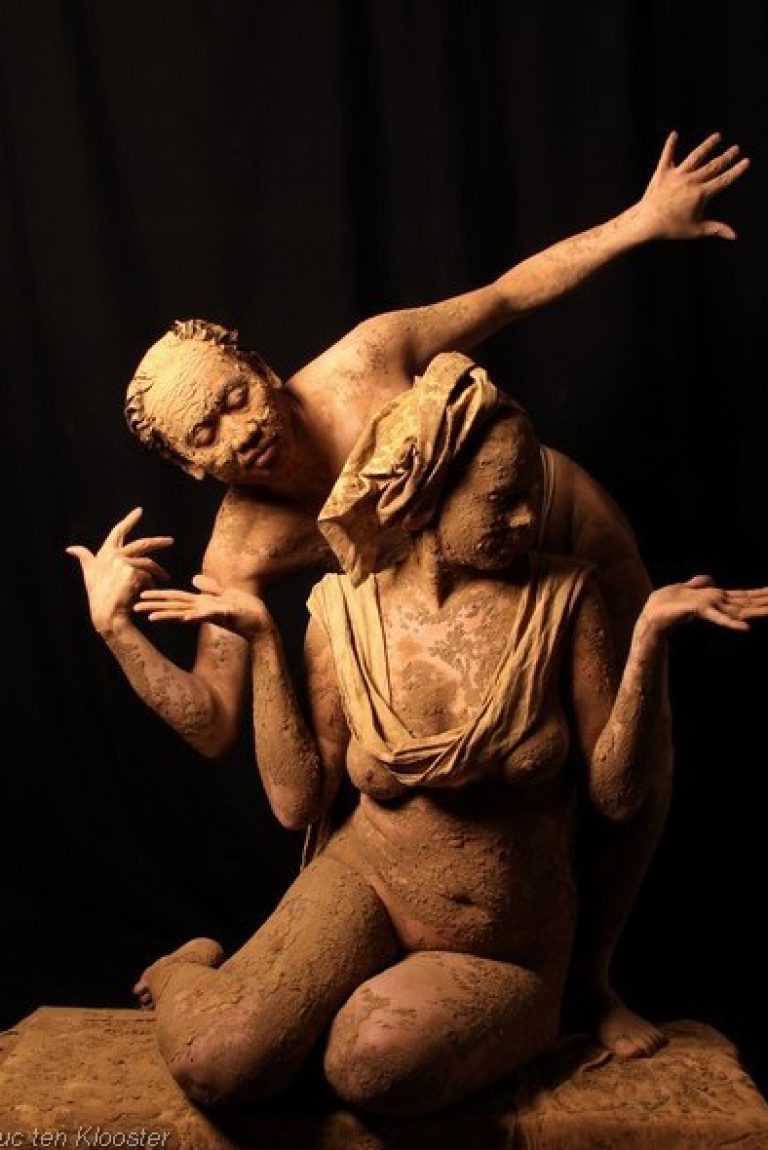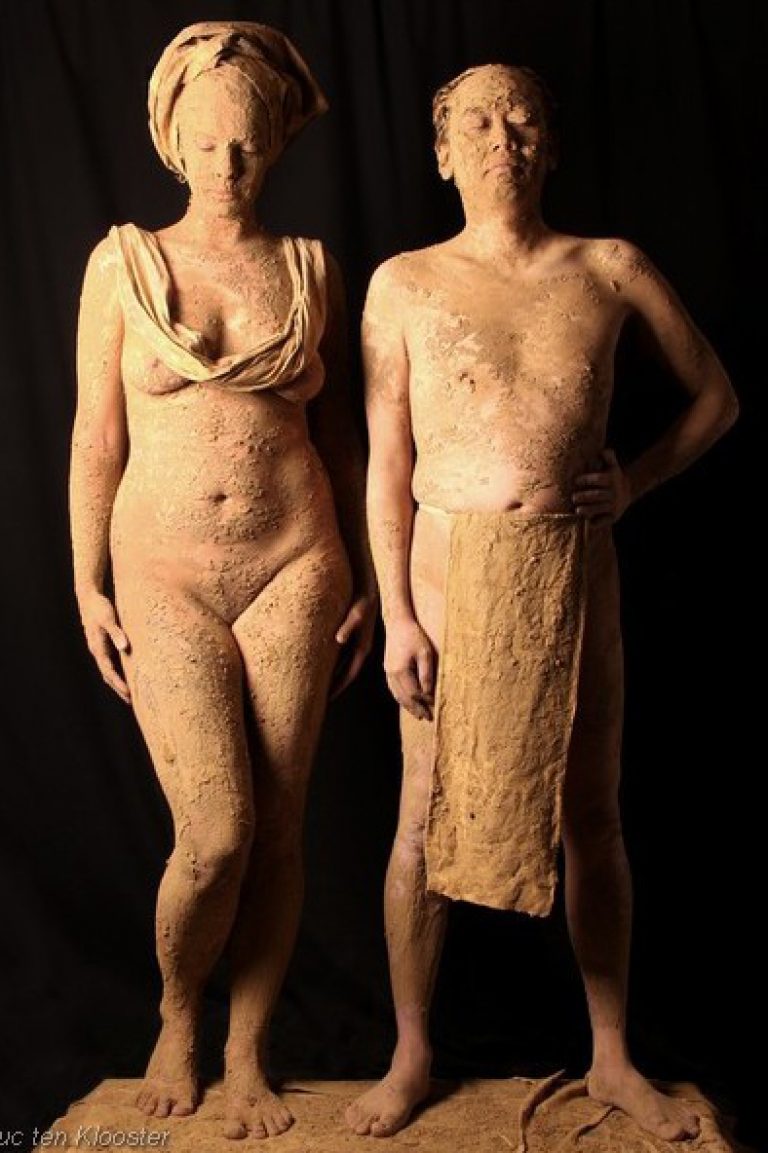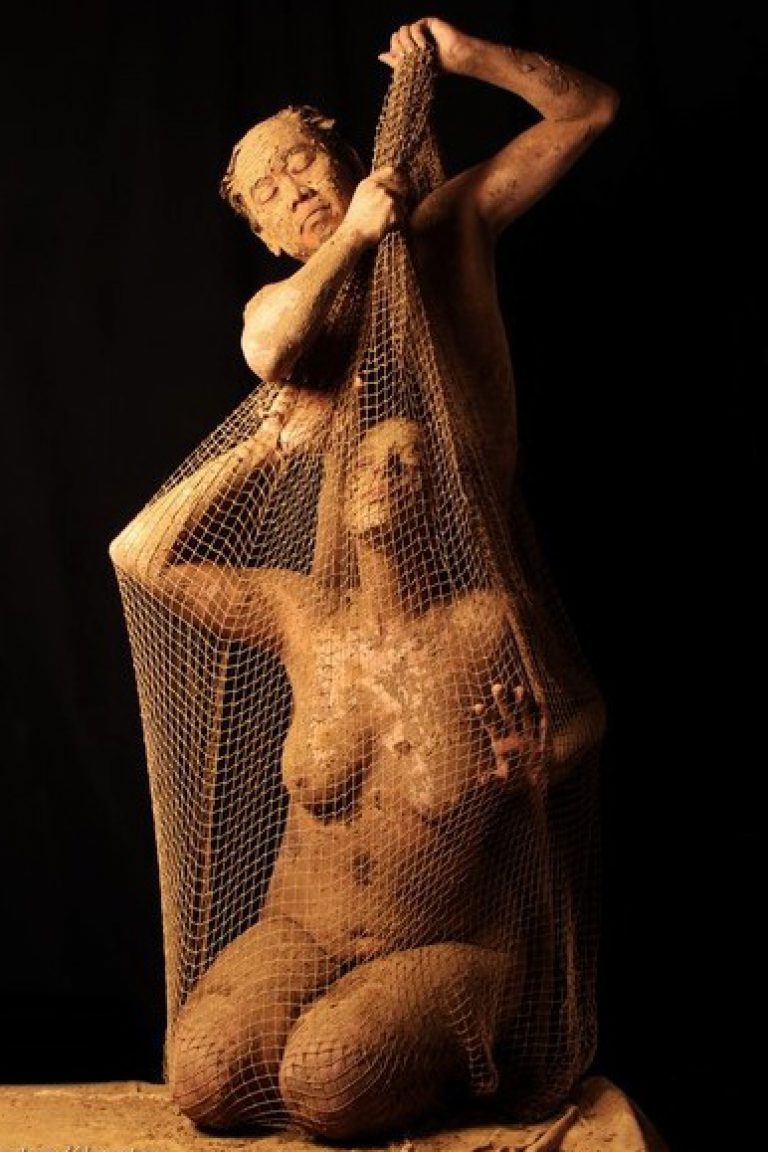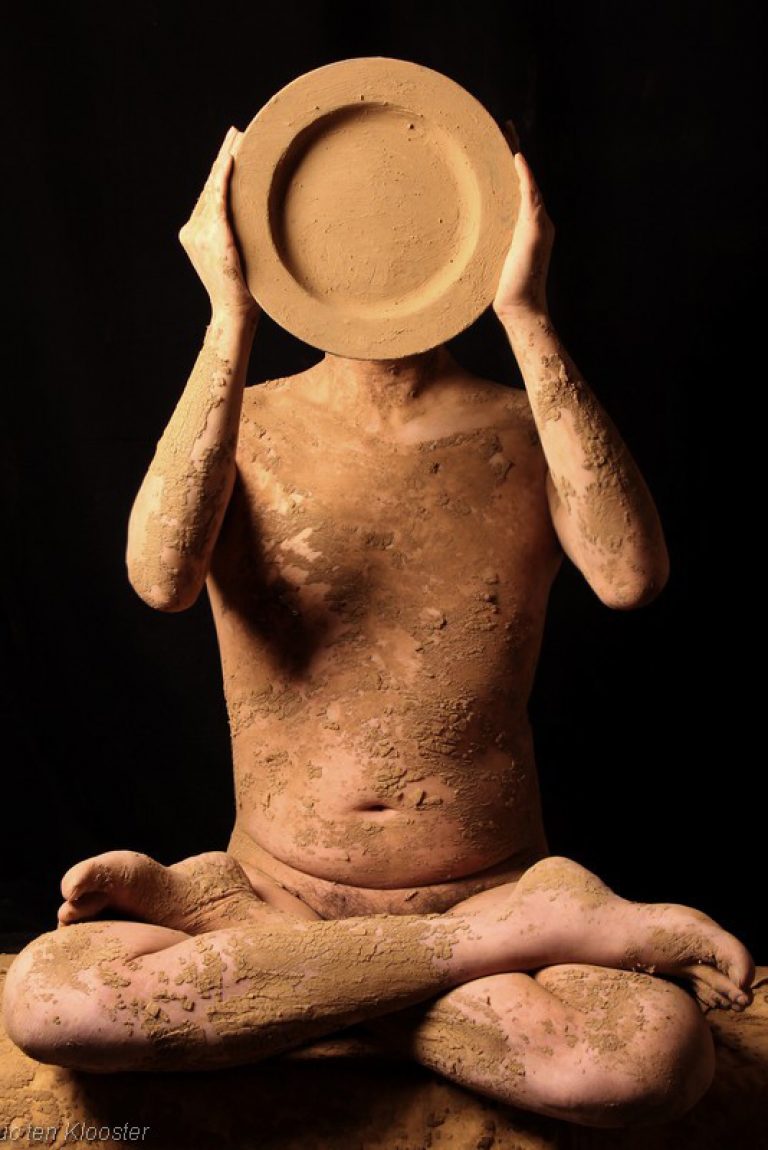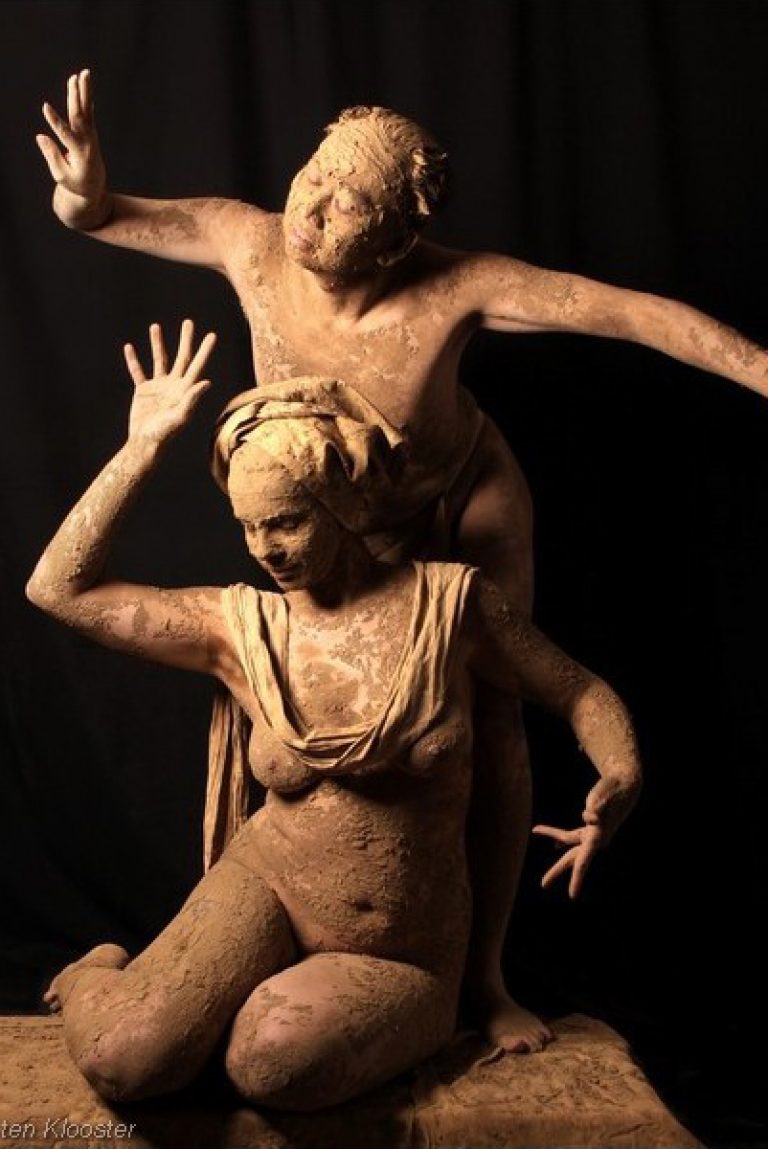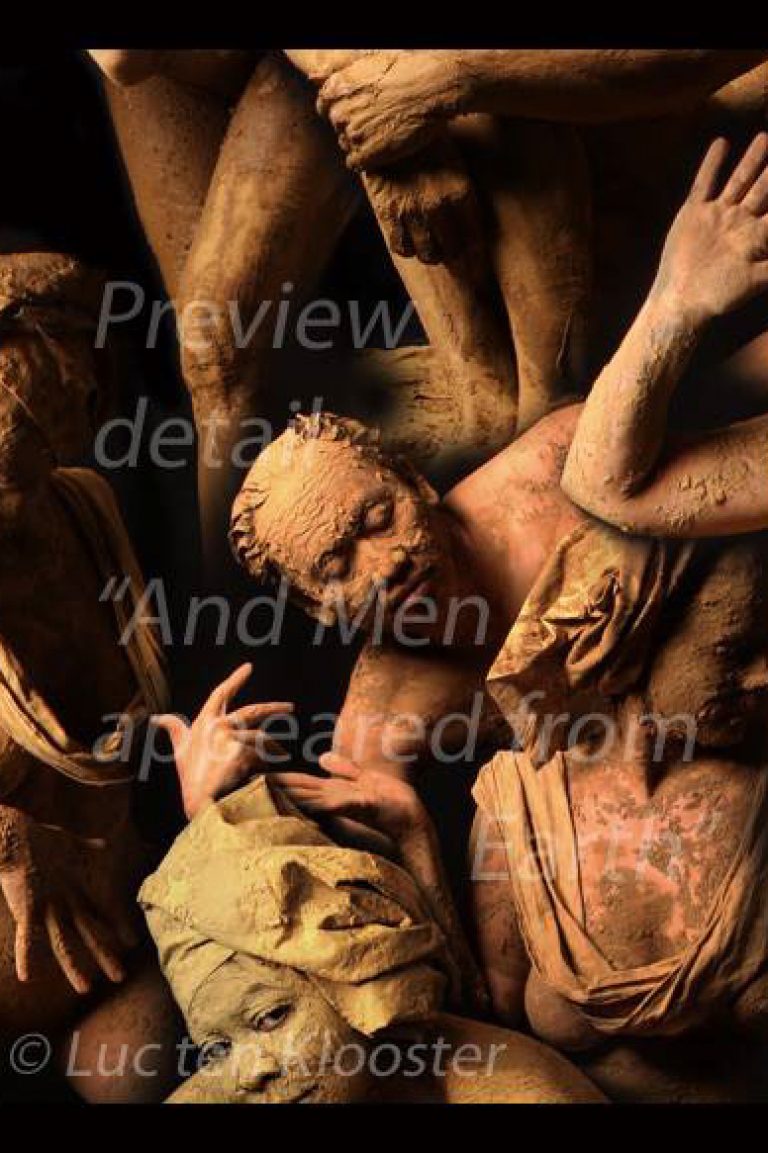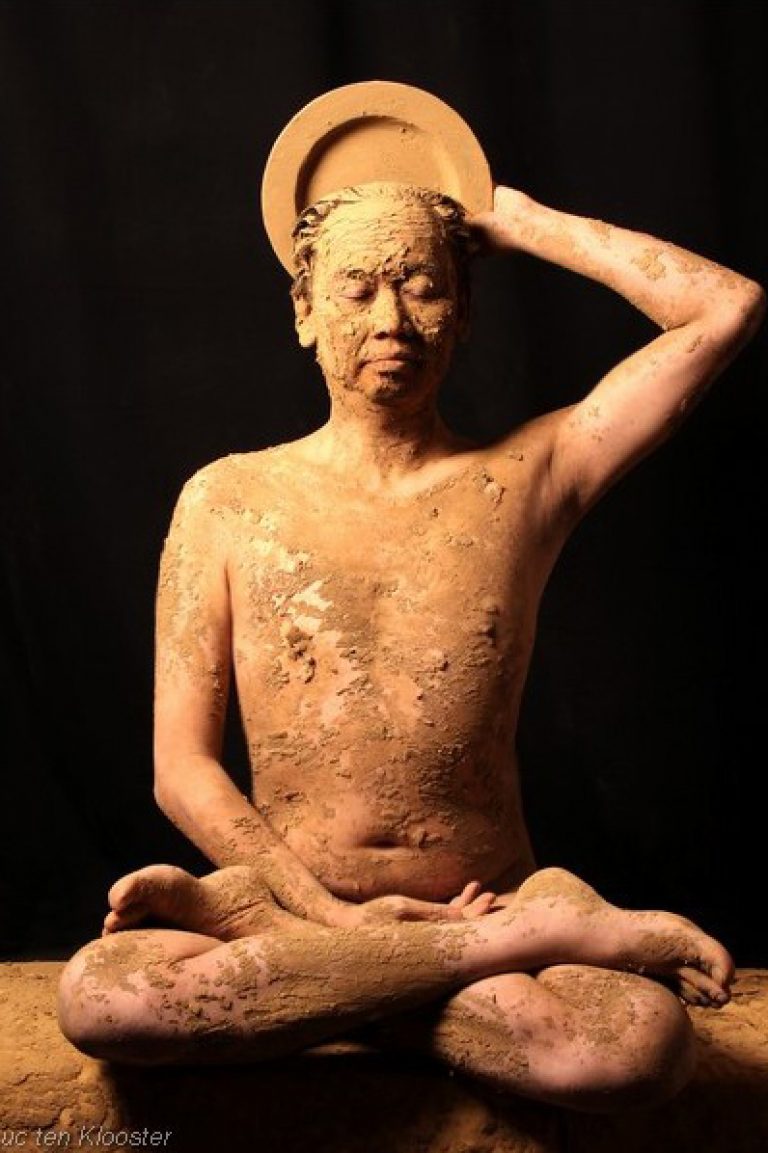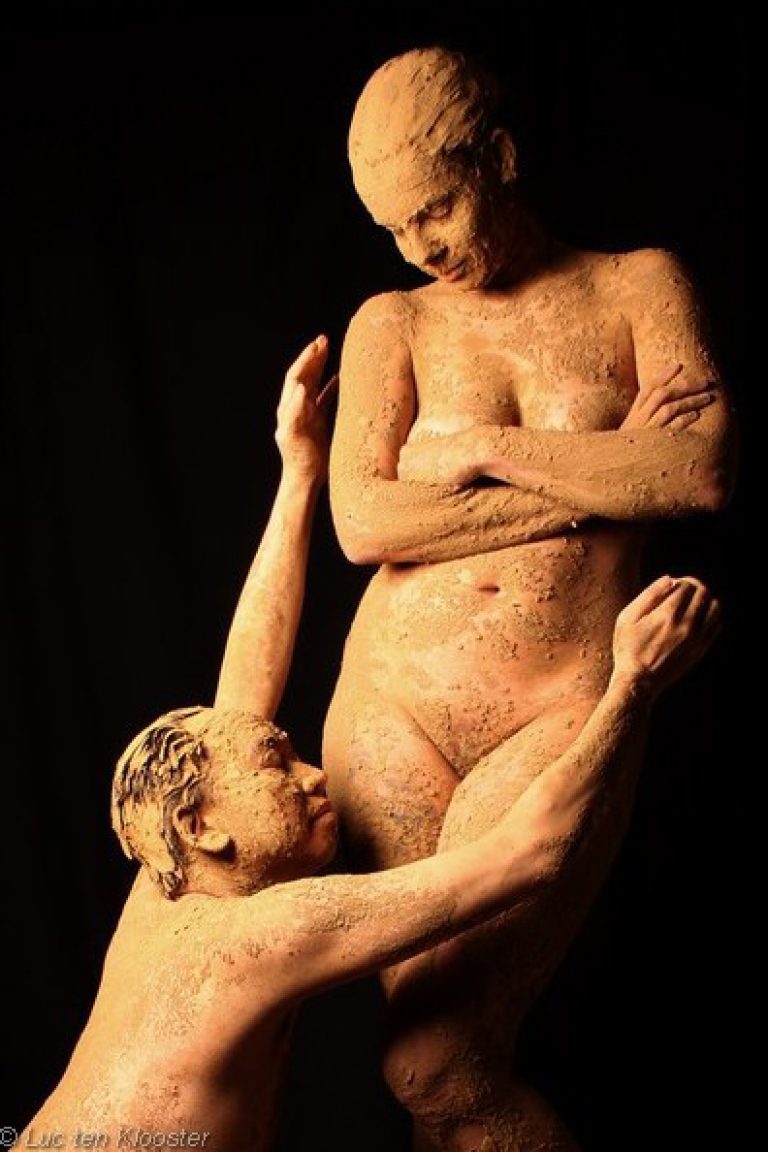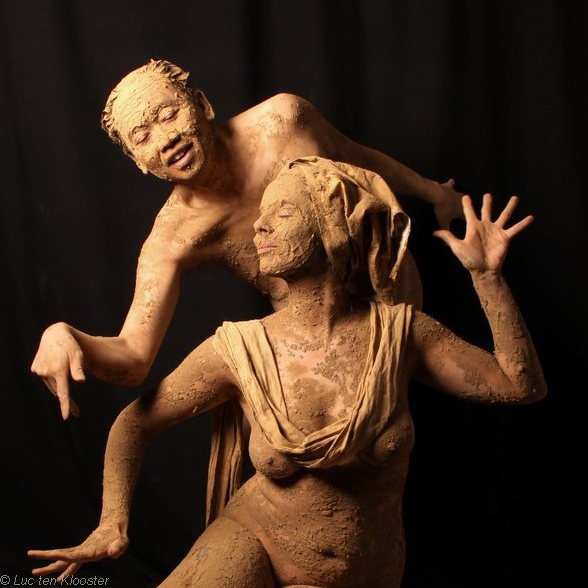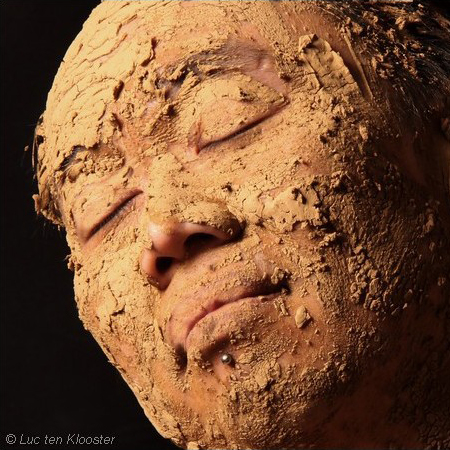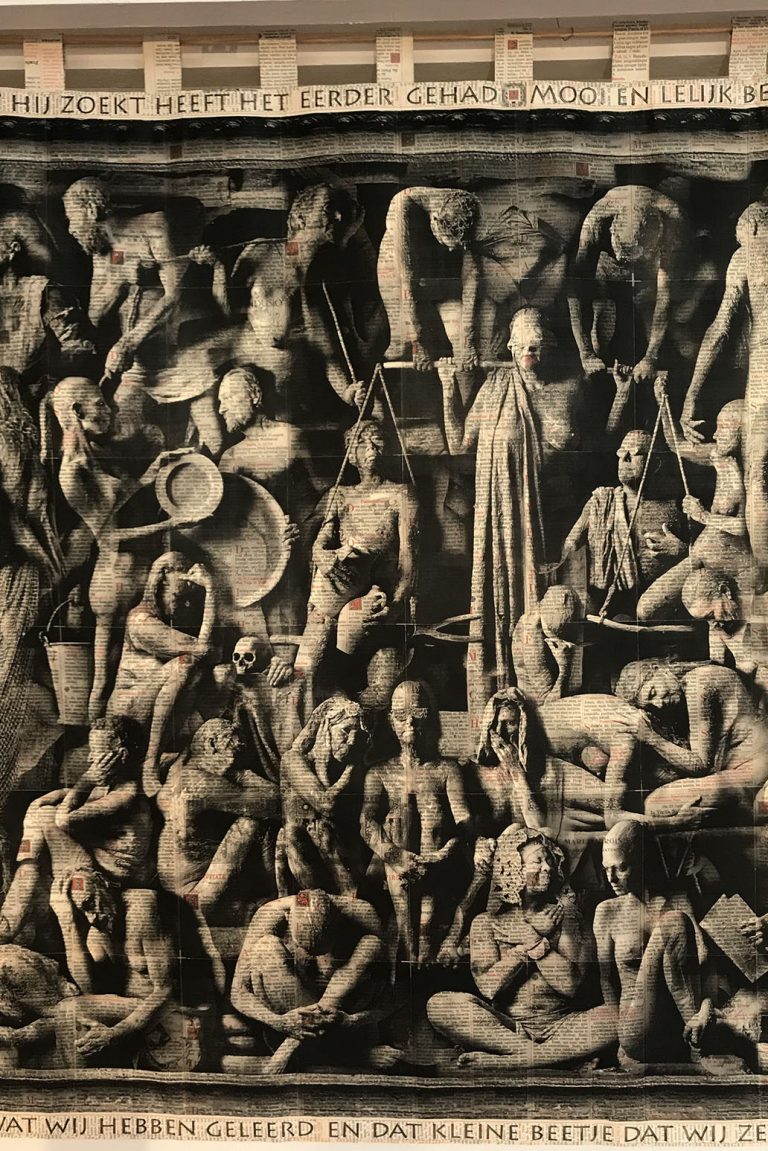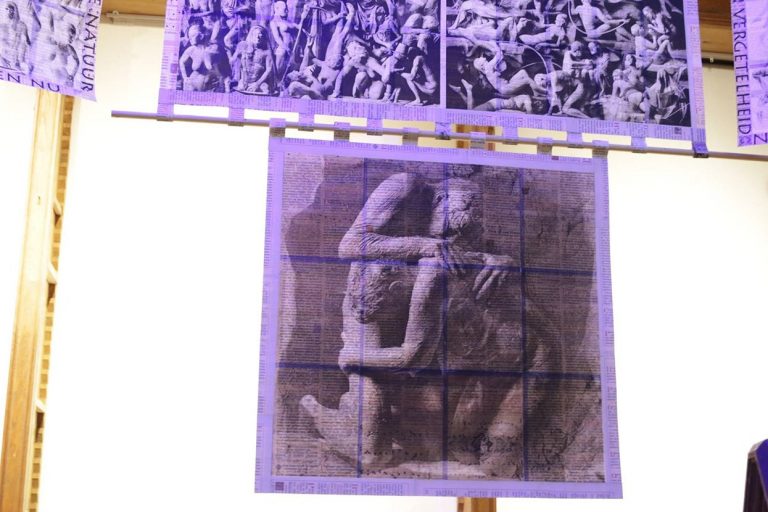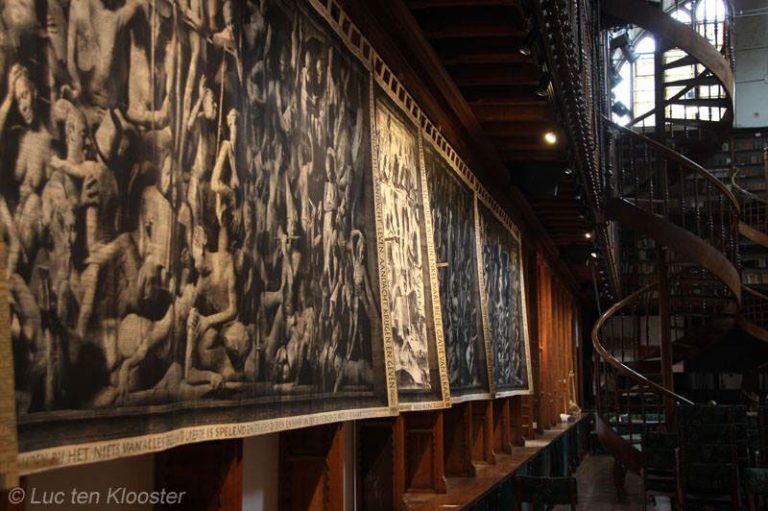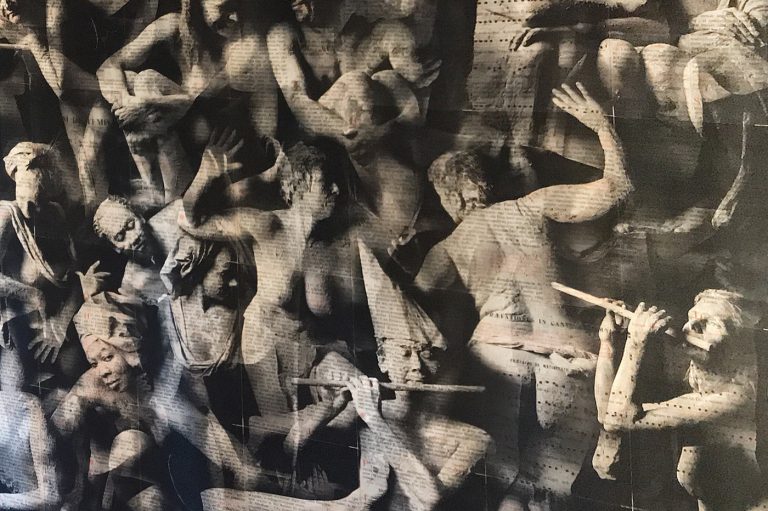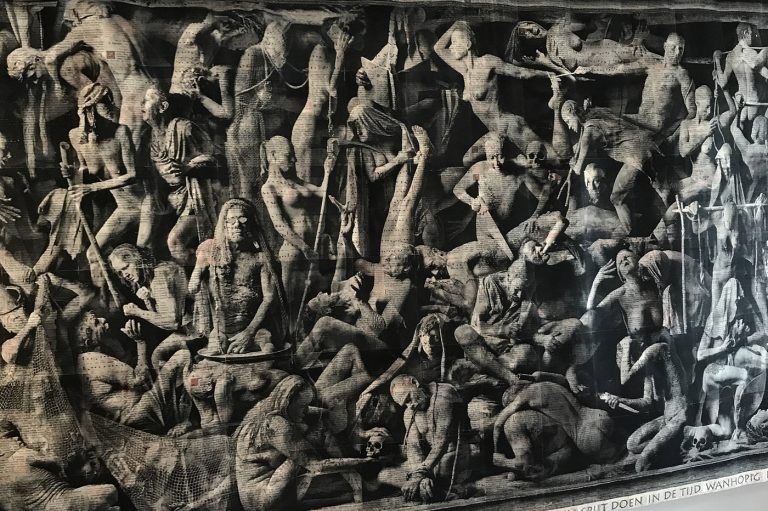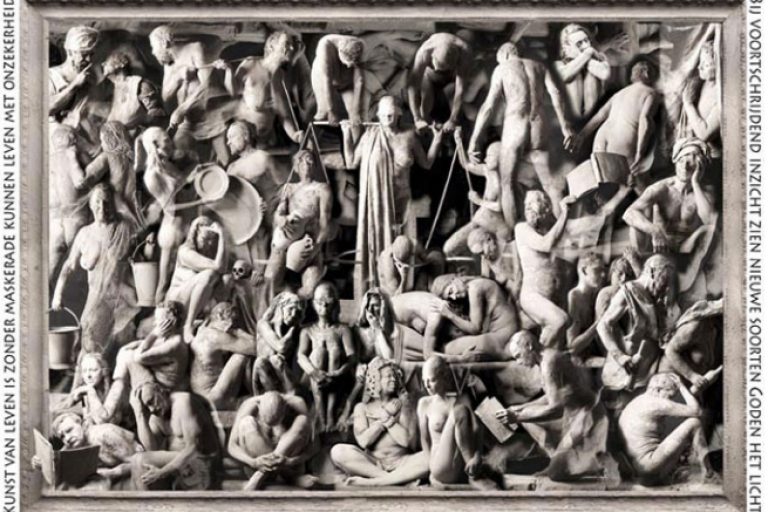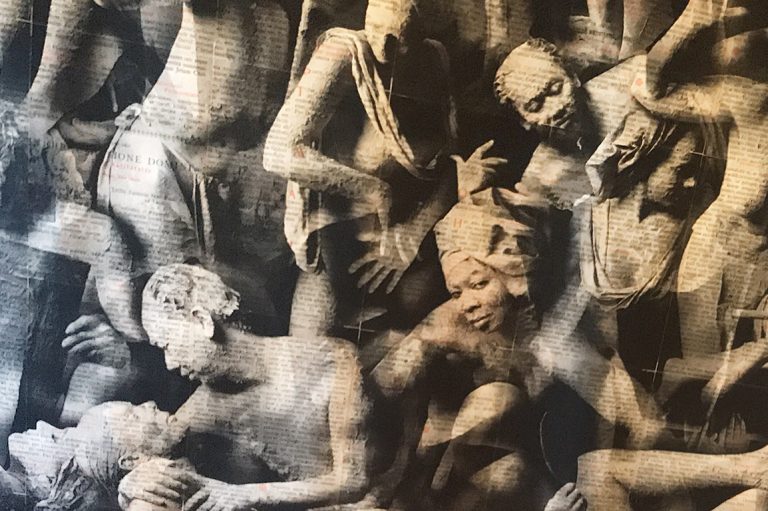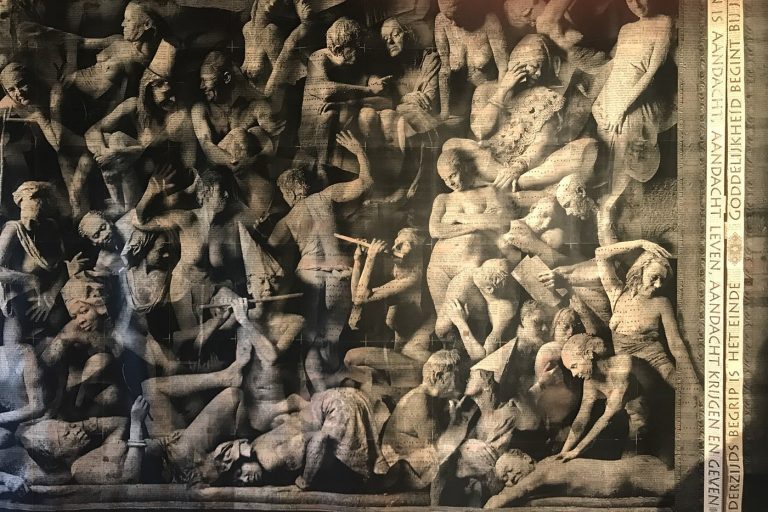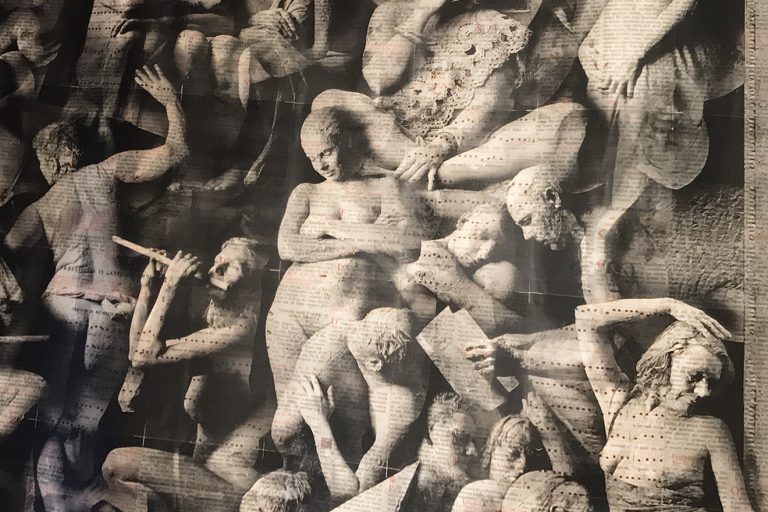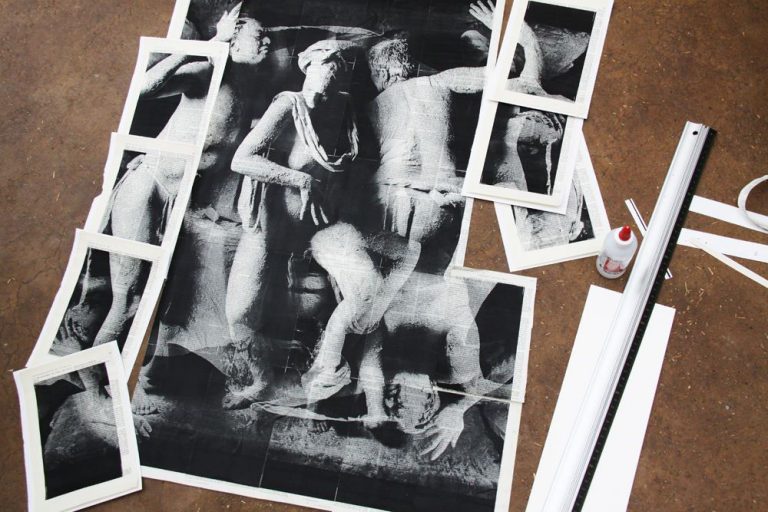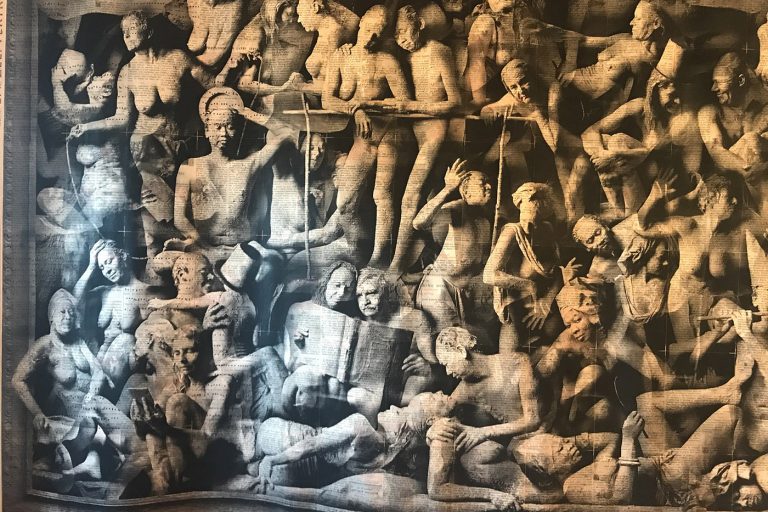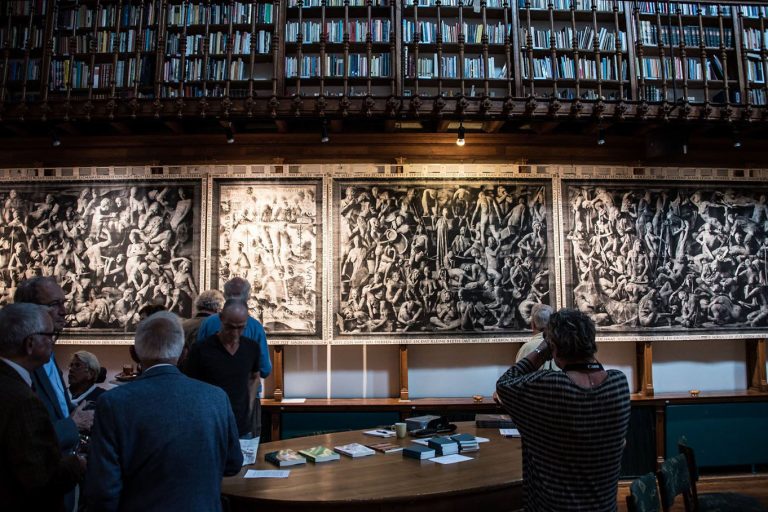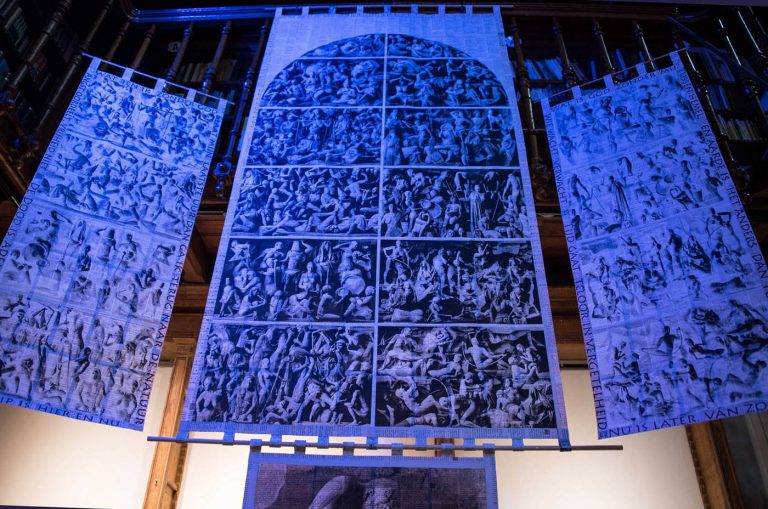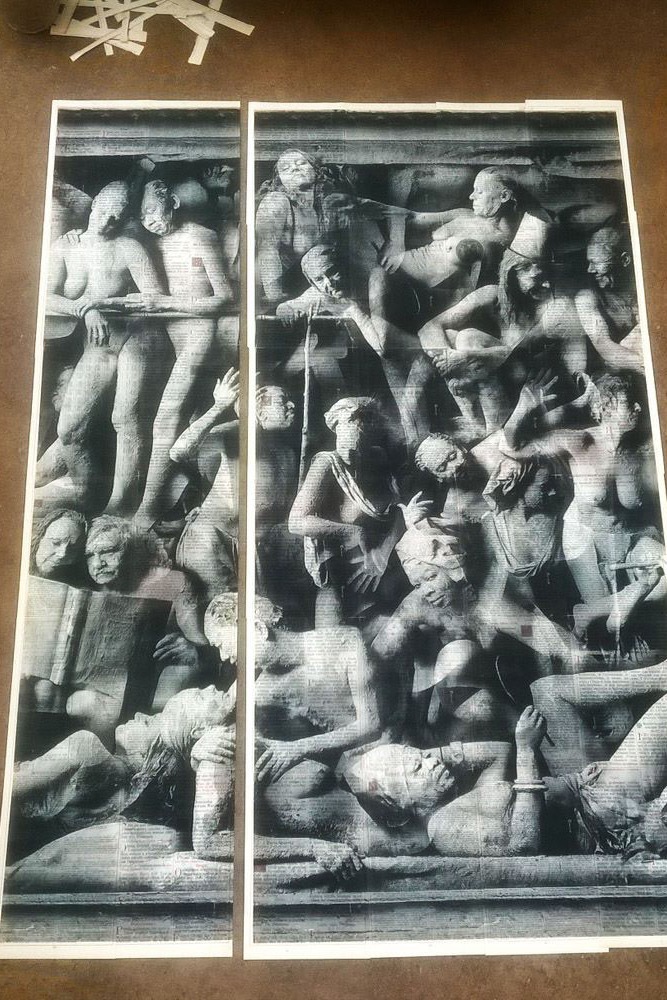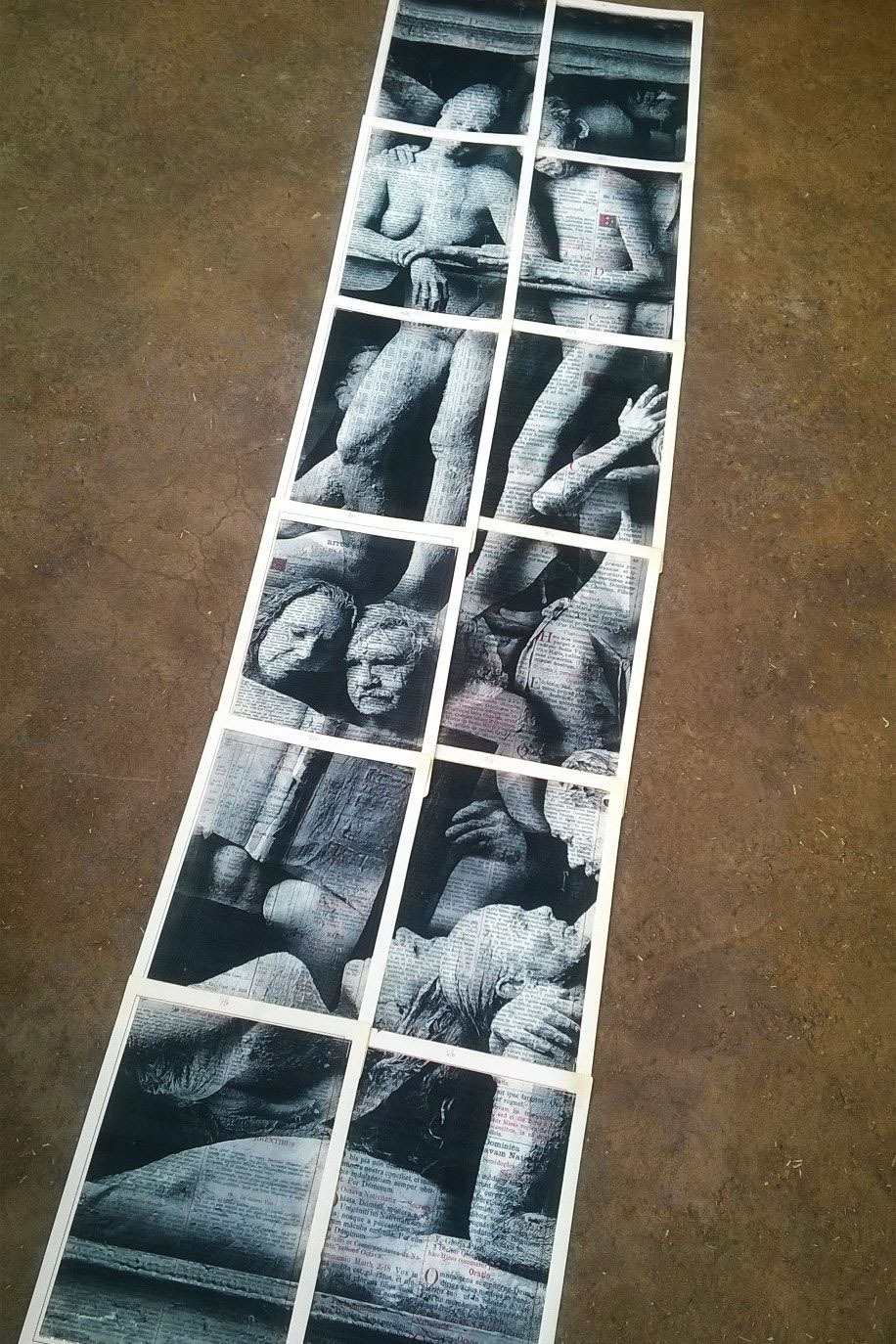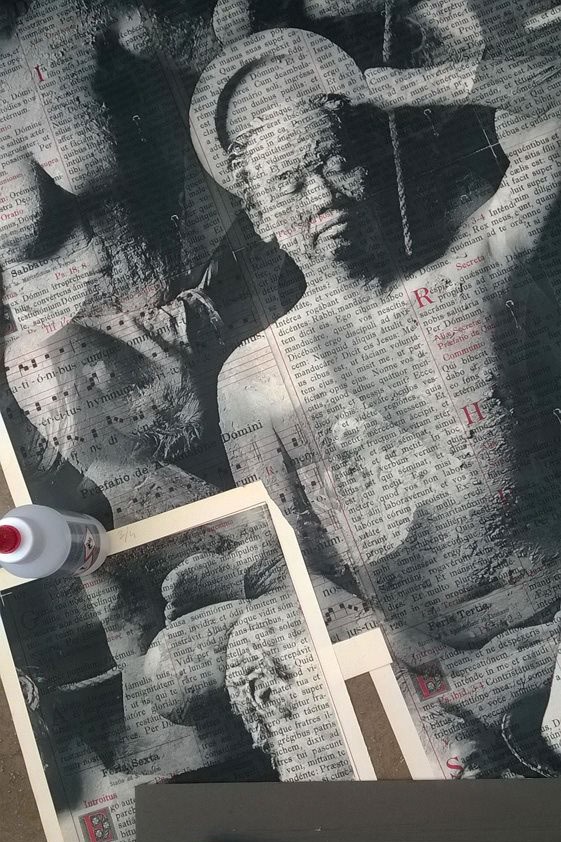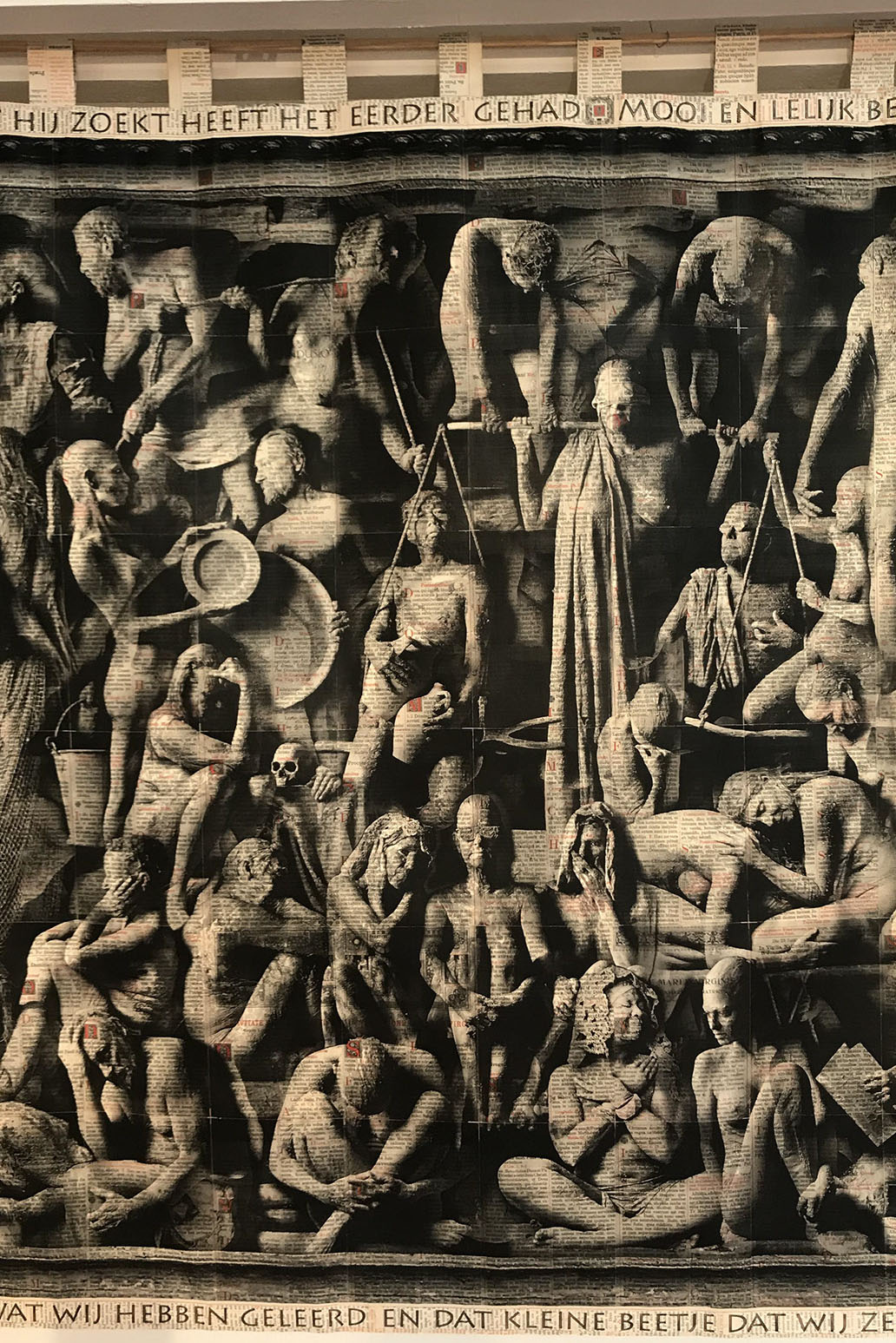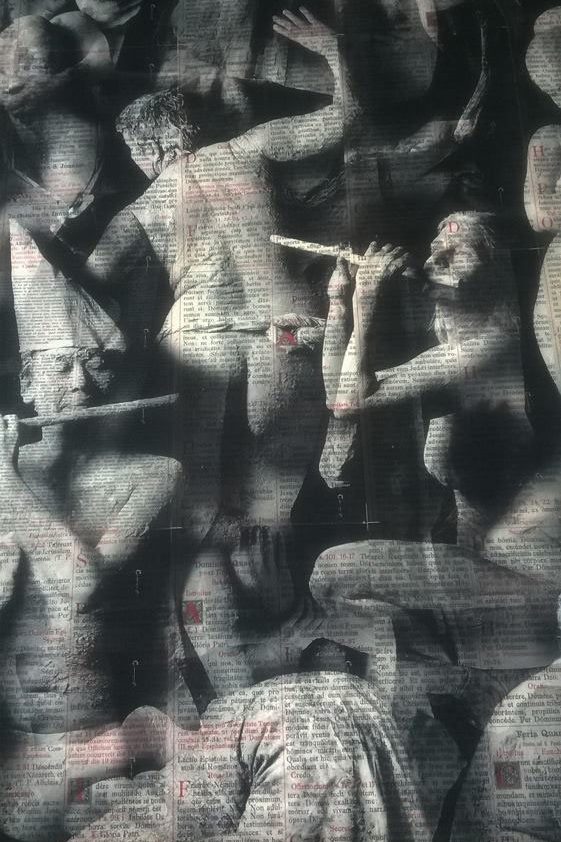Ecce Homo
Luc ten Klooster Photo
Ecce Homo: Nakedness and Spiritual Engineering in Philemon Mukarno’s Performance Art
Beholding the Human Condition
In *Ecce Homo* (2016), Philemon Mukarno confronts the audience with radical honesty. The title—Latin for “Behold the Man”—recalls the biblical moment when Christ is shown to the crowd before his crucifixion. Yet Mukarno’s interpretation moves beyond religion. It invites viewers to face the vulnerability of the human body and spirit. Through his naked presence, the artist demands a deeper recognition of shared suffering and collective responsibility.
Nakedness as a Spiritual Tool
Mukarno’s nakedness is deliberate, not decorative. It is the foundation of his spiritual investigation. By stripping off all social layers—clothes, roles, and illusions—he reveals the raw truth of human existence. This exposure turns into a form of spiritual engineering, aimed at dismantling inner numbness and awakening genuine awareness. Nakedness becomes both a method and message: an act of purification that reconnects body and soul.
Vulnerability and Authenticity
Performance art often challenges comfort zones, yet Mukarno’s approach feels uniquely intimate. His body is not a passive object but an active instrument of self-exploration. Viewers witness an artist pushing through fear to reach authentic presence. This radical vulnerability transforms performance into healing. It reminds us that authenticity begins only after all pretenses are shed.
The Body as a Sacred Landscape
In *Ecce Homo*, the body becomes a living altar. Blood, bones, and breath are elevated to symbols of universal humanity. Mukarno’s exposure transcends gender and culture. It reveals the human structure as a shared map of existence. The audience, suddenly confronted with their own mortality, is drawn into contemplative silence. The performance transforms spectators into participants within a collective act of awareness.
The Sound of Transformation
Sound plays an integral role in Mukarno’s artistic practice. His background as a composer gives *Ecce Homo* precision and emotional control. Through electronic frequencies and rough sonic textures, he constructs a soundscape that resonates with bodily vulnerability. The auditory intensity deepens the experience, guiding both performer and audience toward inner excavation. The sonic discomfort induces reflection and empathetic tension—a resonance between pain and transcendence.
The Ritual of Self-Repair
Mukarno’s art is not spectacle; it is ritual. Each gesture, breath, and silence contributes to a process of repair. By confronting his fragility, the artist transforms trauma into consciousness. His nakedness serves as proof of commitment—a spiritual contract between artist and audience. The performance becomes an existential ritual, where discomfort births renewal, and exposure leads to self-healing.
Mortality as Enlightenment
*Ecce Homo* echoes the ancient *memento mori* tradition—remember that you must die. However, Mukarno transforms this reflection into living action. His own body replaces the symbolic skull. Instead of urging fear of death, he calls for awareness of life. The immediacy of the performance forces mindfulness: one cannot look away without confronting the fragile beauty of existence.
Spirituality Without Doctrine
Mukarno’s spirituality rejects hierarchy and dogma. It arises from deep listening to the body and its ancestral echoes. He explores the link between physical matter and cosmic energy. Nakedness becomes a bridge—between the visible and invisible, between self and earth. This is not a return to religion, but a reawakening of spirit through experience.
The Artist as Alchemist
Trained as a composer, Mukarno brings the same discipline to his physical performance. Sound, body, and energy merge into a single creative organism. His process mirrors alchemy: breaking down matter to reveal its inner essence. The result is a synthesis of form and chaos—proof that structure and surrender can coexist in pursuit of truth.
Legacy of Vulnerable Art
*Ecce Homo* remains one of Mukarno’s most defining works. Critics have noted its uncompromising precision and emotional depth. The performance established a new standard for authenticity in contemporary art. In a world saturated with digital masks, Mukarno’s exposed body reclaims the power of honesty. His message endures: to heal, one must first be seen.
Nakedness as Revelation
In the end, *Ecce Homo* invites us to behold not the divine, but the human. Mukarno stands naked before us—not as an object, but as a mirror. His vulnerability reflects our own struggle for meaning. Through exposure, he achieves connection. Through pain, he finds renewal. *Ecce Homo* is more than performance—it is a spiritual declaration that authenticity, once stripped bare, is the highest form of art.


All came from the dust and all return to the dust. We are all equal, we are all born in the same way and dying is for all of us a heart that stops beating. As Shylock tells us in Shakespeares “Merchant of Venice”: “I am a Jew. Hath not a Jew eyes? Hath not a Jew hands, organs, dimensions, senses, affections, passions? Fed with the same food, hurt with the same weapons, subject to the same diseases, healed by the same means, warmed and cooled by the same winter and summer as a Christian is?”
Shylocks statement is not only valid for Jews and Christians, it is valid for all people on earth.


